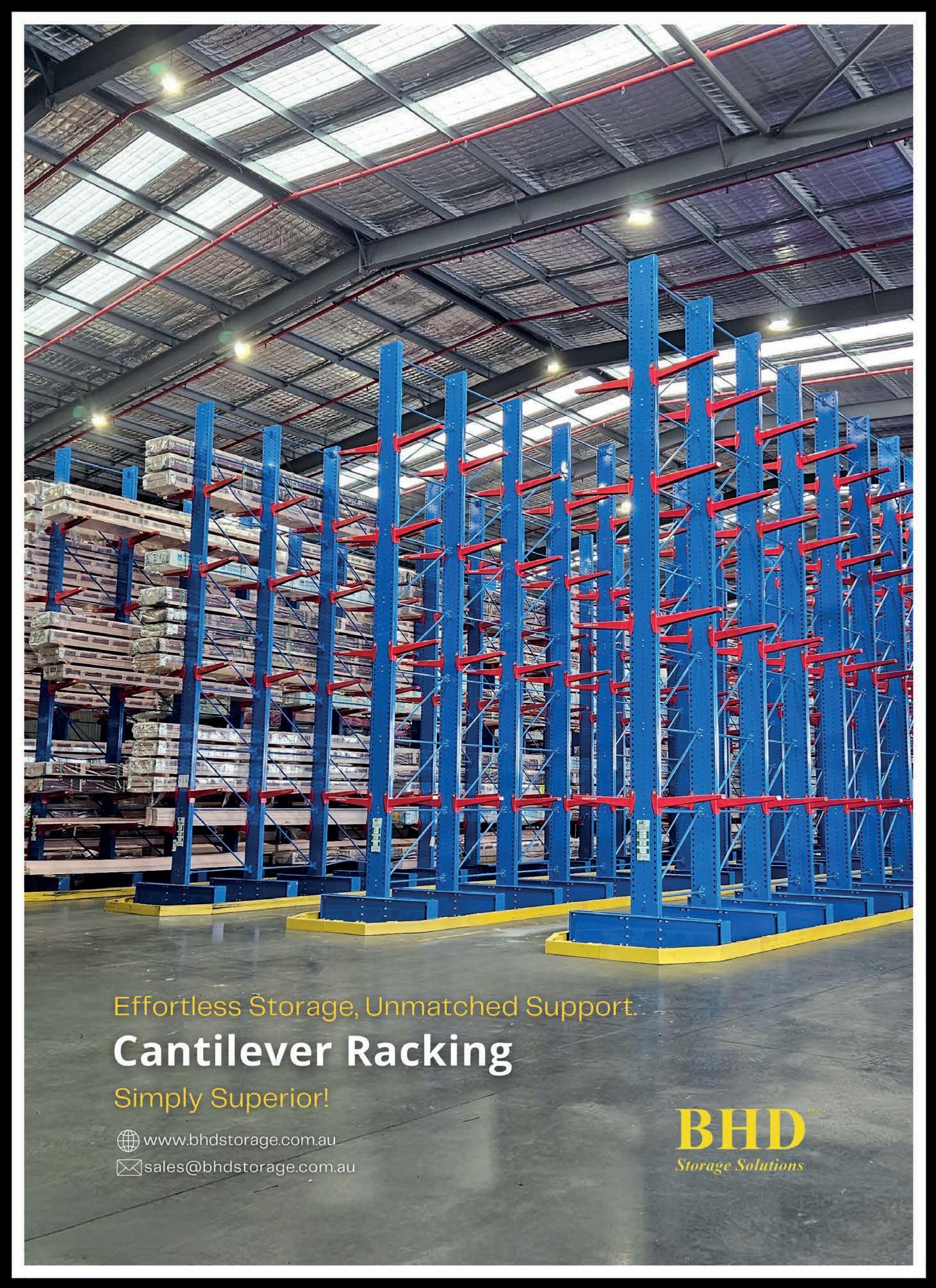SUPPLY CHAIN GOES TO THE BOARDROOM
Prological MD Peter Jones on why supply chain is now mission critical

Körber’s Darren O’Connor explains Hangcha teams up with Coates for materials handling hire success DYNAMIC DUO WHY ADAPTABLE SOFTWARE IS CRUCIAL
MAY 2024
COVER STORY

Elevate APAC
Hosted at the Hilton Sydney on May 7-8 2024, Elevate APAC will feature supply chain transformation insights from leading businesses, a showcase of our leading supply chain solutions, and keynotes from HSBC Chief Economist Paul Bloxham and Australian icon Jessica Watson. Plus an exclusive networking event on a private vessel that will chart its course around the stunning Sydney Harbour.

Use code ELEVATE50 for 50% off your ticket
It’s time to secure your spot at
koerber-supplychain.com
Supply Chain Solutions
CONTACT
MHD Supply Chain Solutions is published by Prime Creative Media
379 Docklands Drive, Docklands VIC 3008
Telephone: (+61) 03 9690 8766
Website: www.primecreative.com.au
THE TEAM
CEO: John Murphy
Chief Operating Officer: Christine Clancy
Managing Editor: Syed Shah
Editor: Edward Cranswick
Journalist: Joseph Misuraca
Business Development Manager: William Jenkin
Design Production Manager: Michelle Weston
Art Director: Blake Storey
Graphic Designers: Bea Barthelson, Kerry Pert
Client Success Manager: Janine Clements
FOR ADVERTISING OPTIONS
Contact: William Jenkin william.jenkin@primecreative.com.au
SUBSCRIBE
Australian Subscription Rates (inc GST) 1yr (6 issues) for $78.00 2yrs (12 issues) for $120.00 – Saving 20% 3yrs (18 issues) for $157.50 – Saving 30%
To subscribe and to view other overseas rates visit: www.mhdsupplychain.com.au or Email: subscriptions@primecreative.com.au
ACKNOWLEDGEMENT
MHD Supply Chain Solutions magazine is recognised by the Australian Supply Chain Institute, the Chartered Institute of Logistics and Transport Australia, the Supply Chain and Logistics Association of Australia and the Singapore Logistics and Supply Chain Management Society.



ARTICLES
All articles submitted for publication become the property of the publisher. The Editor reserves the right to adjust any article to conform with the magazine format.
COPYRIGHT
MHD magazine is owned by Prime Creative Media. All material in MHD is copyright and no part may be reproduced or copied in any form or by any means (graphic, electronic or mechanical including information and retrieval systems) without written permission of the publisher. The Editor welcomes contributions but reserves the right to accept or reject any material. While every effort has been made to ensure the accuracy of information Prime Creative Media will not accept responsibility for errors or omissions or for any consequences arising from reliance on information published. The opinions expressed in MHD are not necessarily the opinions of, or endorsed by the publisher unless otherwise stated.
STEPPING UP SUPPLY CHAIN
Welcome to the May issue of MHD Supply Chain Solutions we are proud to present an array of insightful articles that tap into the pulse of industry trends and strategic advancements.
Our cover story features an in-depth exploration with Peter Jones, Managing Director at Prological, who discusses how supply chain dynamics are increasingly recognised as a vital component of strategic growth in boardrooms across Australia. This piece sheds light on the necessity of embracing modern technologies such as integrated systems and AI to enhance customer fulfilment and visibility.

We also delve into the adaptive software solutions from Körber, where Darren O’Connor highlights the importance of flexibility in today’s fast-evolving supply chain environments. His insights remind us that staying competitive means embracing systems that can pivot as quickly as market demands change.
Furthermore, our feature on the partnership between Coates and Hangcha illustrates the strategic alignment and sustainability efforts driving their collaboration, setting a benchmark for industry partnerships.
Beyond these highlights, the issue contains a range of other great stories that address the diverse challenges and opportunities facing our industry today. From innovative approaches to managing complex logistics to the latest advancements in equipment and technology, each article is designed to inform and inspire.
We hope you find these stories both enlightening and actionable, as you navigate the complex landscape of supply chain management. Thank you for joining us on this journey of continuous improvement and strategic foresight.
Happy reading. See you next month.
Edward Cranswick Editor edward.cranswick@primecreative.com.au
MHD
MHD MAY 2024 | 3
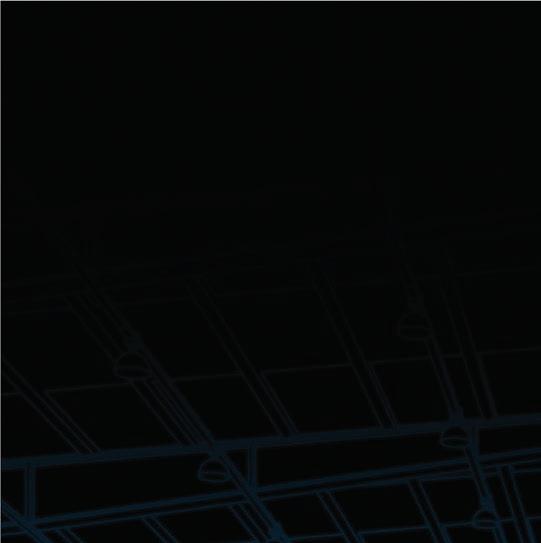
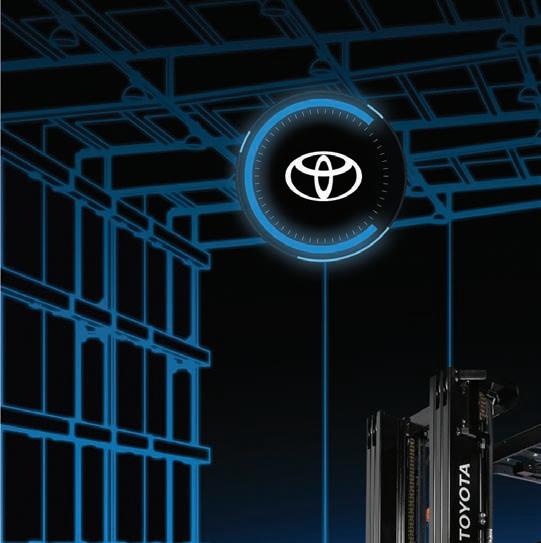



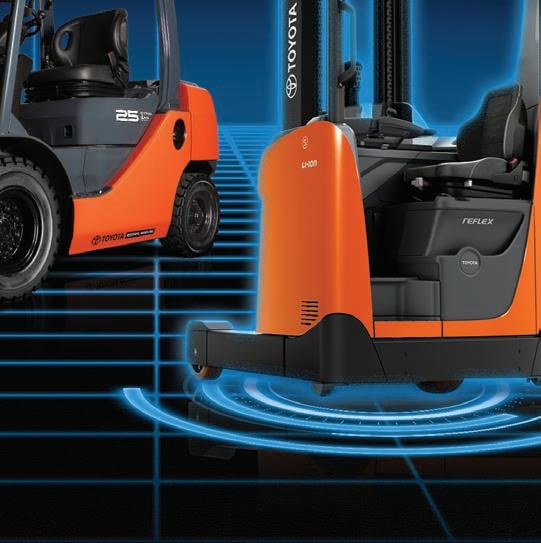






THIS ISSUE



COVER STORY
28 Prological on shaking up the C-Suite
SUPPLY CHAIN
36 Körber on adaptable software
40 GS1’s Scan4Transport
46 Enersys on expanding capacity
56 Nilfisk launches sweeper/scrubber combo
58 Sigma Healthcare on tailoring pharma solutions
60 Santova navigating innovations in logistics
62 Adaptalift equips facilities with Hyster forklifts


MATERIALS HANDLING
32 The Hangcha-Coates partnership
34 Jungheinrich on low level-order picking
38 TMHA helps expand ClarkSolutions
49 Linde on selecting the right energy sources
WAREHOUSING
52 Skywire and Zebra benchmarking excellence
54 Ferag on choosing the right WMS
ASSOCIATIONS, EVENTS, AND REGULARS
26 SEW Eurodrive speaks about Mercury Awards
43 MEGATRANS and Bearhug on pallet wraps
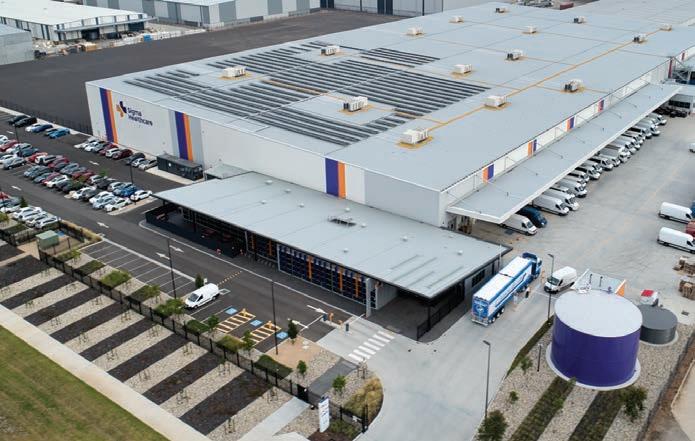
64 SCLAA advertising ASCL sponsorships
65 RWTA holding conference in Victoria
66 ASCI on series and partnerships
68 Product Showcase
70 People on the Move
Körber’s Darren O’Connor explains Hangcha teams up with Coates for materials handling hire success DYNAMIC DUO WHY ADAPTABLE SOFTWARE IS CRUCIAL MAY 2024 Prological MD Peter Jones on why supply chain is now mission critical SUPPLY CHAIN GOES TO THE BOARDROOM COVER STORY ON THE COVER Prological MD Peter Jones on why supply chain is now front-of-mind in the boardroom. MAY 2024
38 COVER STORY 24 ISSUE 03 VOLUME 55 58 MHD MAY 2024 | 5
SHOULD WE CHANGE HOW WE MANAGE RISK?
Supply chains need to contend with shifting demand and contradictory consumer behaviour. Image: Shutterstock/Gumbariya.


TMX Transform’s strategic advisor, Linda Venables, writes in this MHD op-ed about the occurrence of the polycrisis in the supply chain industry, questioning if we should change to manage risk.
EXPECT THE UNIMAGINABLE
Despite diligent risk management and contingency planning, I had not even considered the causes of some of the most catastrophic operational disruptions in my supply chain career. Until they happened.
Case in point: on a 13-degree day in April in western Sydney, a hailstorm belted our threeyear old distribution centre. The structural impact of the hail itself was not the culprit. The issue stemmed from a subsequent rainstorm, with the hail blocking drainage from the roof, trapping over 200 tonnes of water.
The weight of the water breached the DC roof in two areas, compromising the structural integrity of the building, rendering our key NSW site
inoperable, and disrupting the weekly supply of over a million cartons to customers.
A business continuity plan and crisis management process helped the leadership team make quick decisions. Relocating NSW team members and increasing local resources, supplemented our Victorian and Queensland throughput capacity. This increase in capacity, coupled with inventory repositioning and transport reconfiguration, meant customer service resumed within 48 hours.
MHD INDUSTRY NEWS & OPINION
6 | MHD MAY 2024
 Trewin and Georgia Denton WesTrac Tomago, NSW
Trewin and Georgia Denton WesTrac Tomago, NSW
As one of the world’s largest authorised Cat® equipment dealers, WesTrac knows that the smallest of parts can make or break a machine, and have a big impact on site operations.
At its headquaters in Tomago, NSW, WesTrac implemented an AutoStoreTM automated spare parts storage and fulfilment system from Dematic, which allows WesTrac to keep stock organised, use warehouse space efficiently, and prioritise urgent orders to be ready in just 5-10 minutes.
With the AutoStore solution, WesTrac can get vital parts to customers quickly, keeping Australia’s heavy industry moving.
Learn more at dematic.com/westrac


Rapid spare parts fulfilment you don’t need to move the Earth for. Vital parts ready to go in 5 Dematic.com 02 9486 5555 info.anz@dematic.com Scan to watch the video!
Natalia
We then secured three local warehousing and distribution facilities to take us through the 16 months until we could return to the original premises.
This ‘black swan’ and other unimaginable events reveal the limitations of relying solely on the assessment of risk. Our risk register did not include the neat line item: “unseasonably severe hailstorm results in trapped water breaching the weight limit of the roof”.
BUT CUSTOMERS HAVE A RIGHT TO EXPECT A BUSINESS TO CONTINUE TO OPERATE
In an increasingly volatile, uncertain, complex, ambiguous (“VUCA”) world, as we seek resilience in our supply chains, we must also plan from a continuity perspective. Failure to manage business continuity can also impact your team members and retention, your brand value, and your shareholders.
A continuity plan includes alternative methods of operating, should one or more aspects of an operating model fail; a good plan reassesses the feasibility of such scenarios on an ongoing basis. For example, several factors render long-term interstate supply infeasible, so our plan required local alternate warehousing and distribution. Given the hailstorm impacted eleven other companies in our trading estate, the clarity of our plan saw us move quickly and secure alternative facilities.
THE NEW MEANING OF DISRUPTION
Even semantics has been disrupted. ‘Disrupt’ used to mean a gamechanging way of shaking up a sector. In supply chain we now see so many con-current disruptions, the industry has adopted the term ‘polycrisis’ (first coined in 1999 by French theorist Edgar Morin).
Supply chains must achieve performance targets despite the impacts of multiple disruptions. Disruptions impact physical operations, such as extreme weather events and labour
shortages, and the supply of goods, such as geopolitical conflicts. Supply chains need to contend with shifting demand and contradictory consumer behaviour (in apparel, for example, consumers want fast, free returns but for their vendor to operate sustainably) all whilst contemplating the rising tide of ESG compliance requirements and regulations.
DON’T YOU FORGET ABOUT ME
So why isn’t risk management front of mind for many of us?
Spending time in your business on risk management can be challenging. It is seldom seen as urgent. Risk ownership is often murky. It is clear who has oversight? Who is accountable for the level of risk in a business?
The CRO, the Board’s ARC, the CSCO? Has the Board set the company’s risk appetite? And who is responsible for ensuring risk remains in line with the company’s tolerance? Are known risks adequately mitigated and unknown risks contemplated? How are colleagues engaged when mitigations and contingencies require cross-functional collaboration?
ATTUNING TO EMERGING RISK
We tend to think of ‘risk’ in terms of dramatic physical events: a team member injury, warehouse fire, racking collapse, or systems outages. These are potentially catastrophic, but their scale tends to overshadow the far more likely, smaller risk events.
Consumers now interact directly with supply chains, and therefore represent an increasingly significant risk to businesses. Today’s consumer is more aware of where products come from (think provenance and modern slavery, traceability, and fraud), how product is made, packaged, and shipped (think resource and energy use and associated environmental impacts), and relies on being able to order at the last minute. The link between the sourcing and manufacturing of products, the operational
performance of the supply chain, and the company’s brand has never been more apparent.
As business leaders reflect whether their continuity plans are adequate, I’ll leave you with some more examples of the unthinkable occurring during the span of my career:
• At 6am one Sunday, a nearby fuel depot (Google ‘Buncefield depot’) had an explosion that was so large, it devastated nearby buildings and closed the industrial estate. The impact distorted the roller-shutter dock doors and triggered the sprinkler systems, damaging expensive inventory in an FMCG warehouse a mile away.
• A sprinkler pipe burst in the ceiling of a cold storage facility in WA, bringing down the ceiling, ruining the pre-assembled customer orders and turning the freezer into an ice rink. On the second of January, in the middle of a very hot Australian summer, I did not expect to be searching for ice removal equipment!
• A communications cable was accidentally severed in a nearby field, which took the warehouse network offline. Feeling confident of our BCP, to fail-over to the communications provider’s mobile network, we were dismayed to find all telco customers in the area had the same contingency and the mobile service had insufficient bandwidth.
You won’t feel the impacts of the warehouse roof that never collapses, the devastation of a safety incident that never occurs, or the pressure of staff shortages that don’t transpire. But things do and will break, so whilst it is at times comforting that they may not have broken in your business in recent years, the past is not a good predictor of the future.
Businesses need to be confident in their level of resilience.
Continuity planning plays a critical role in providing that confidence.
Linda Venables, Strategic Advisor, TMX Transform
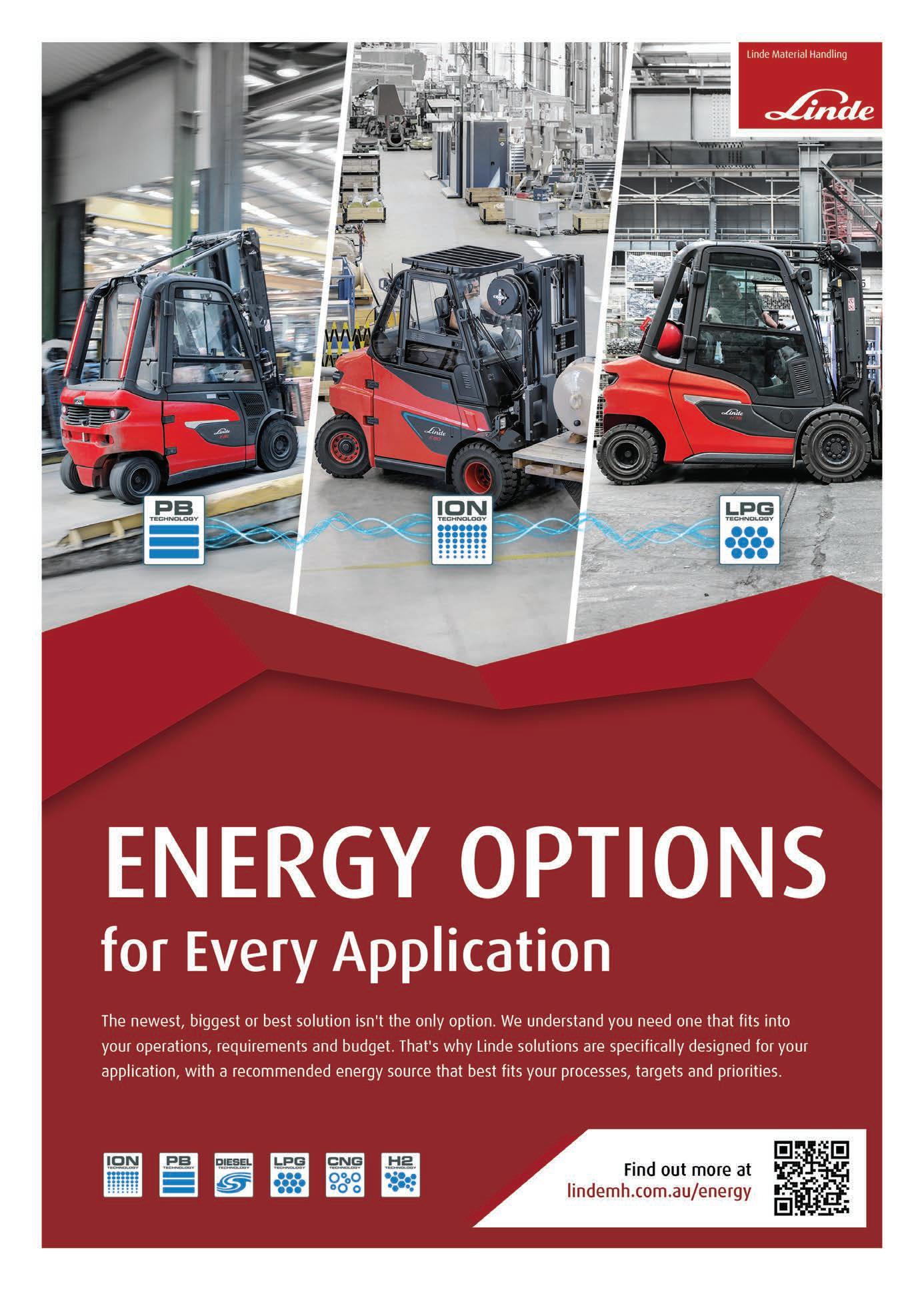
MHD INDUSTRY NEWS & OPINION
8 | MHD MAY 2024

DEMATIC AUTOMATES PEPSICO’S THAI FACILITY
Following a partnership with PepsiCo, global leader in convenient foods and beverages, Dematic has integrated automation as a central feature of Pepsico’s expanded production and logistics facility.
The Rojana facility is a critical regional hub that produces a variety of products. With a growing demand for its products in Thailand, PepsiCo recognised the necessity to build capacity in both production and logistics.
“Rojana is one of our biggest plants, and it also has several different product platforms,” says Colin Matthews, Supply Chain Senior Director – IndoChina Foods, PepsiCo.
“We have potato chips, we have Stax-brand chips, and we have Fry Pack in extruded products as well. Those products are made at Rojana and are not only distributed nationally across Thailand, but also internationally to Vietnam and other
neighbouring countries.”
To support PepsiCo’s growth and address space constraints and labour challenges, Dematic worked closely with PepsiCo to develop an automation solution to address its storage, throughput capacity, and productivity needs in its logistics operations. The solution centres around an Automated Storage and Retrieval System with a direct link to both the production and order fulfilment areas.
“We foresee a manpower shortage being a major challenge for our local operations in Thailand,” explains Charan Techapattaraporn, Logistics Manager, PepsiCo. “Automation, therefore, is the perfect solution to take on this challenge, whilst also improving our facility operations across the board.”
The AS/RS stores pallets within five aisles of double-deep, high-bay racking with a total of 16,520 pallet locations.
A network of pallet conveyors and Rail-Guided Vehicles (RGVs) receives pallets automatically at the end of the production lines and transports them for storage, then directs them from storage to despatch docks or to automatically replenished pick locations for full-case order picking.
The solution includes Dematic Warehouse Control System software to manage all the automation, the material flow, and the inventory as well as to provide real-time tracking and visibility of all transactions.
“The AS/RS is at the heart of PepsiCo’s strategy to enhance its production and logistics efficiency at the Rojana facility,” says Phamondate Rukdee, Sales Manager, Dematic Thailand.
“It provides an extremely space efficient way to store products between when they are manufactured and when they need to be assembled and despatched for delivery to customers.”
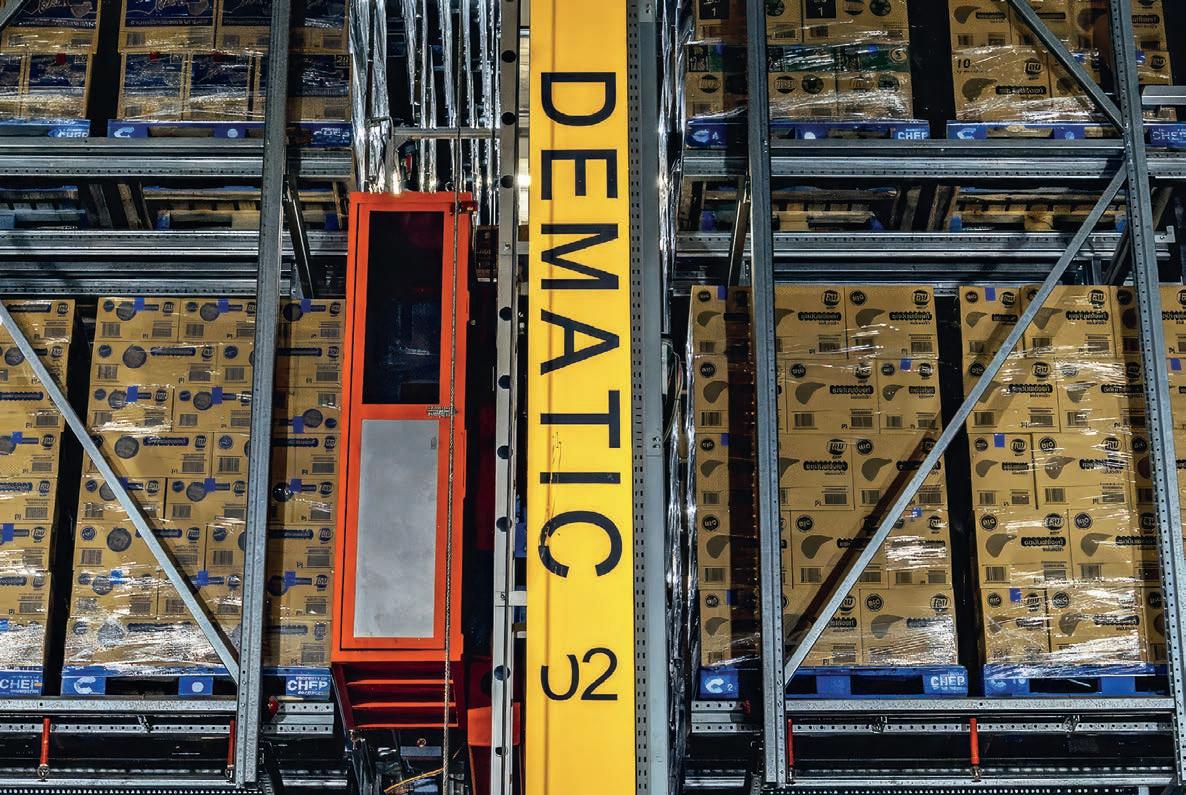

MHD INDUSTRY NEWS & OPINION
10 | MHD MAY 2024
Dematic worked closely with PepsiCo to develop an automation solution to address its storage, throughput capacity, and productivity needs. Image: Dematic.


THREE STEPS TO TAKING CONTROL OF INDUSTRIAL FLOOR CLEANING
Facility cleaning may not be high on your priority list. Especially when you have allimportant productivity and safety KPIs occupying headspace. But whether the goal is site presentation, dust control, ensuring visibility of safety lines, or preparing for an upcoming audit – floor cleaning at your site does need to happen.
Conquest Equipment, renowned for their robust range of industrial sweepers and scrubbers, offer their 3 expert tips to taking control of floor cleaning at your facility. So, you can focus your attention on heading up a productive and safe operation.
Step 1. Choose the right floor cleaning equipment
With so many variables to be considered, it can be difficult to match your cleaning equipment needs to your unique business requirements. But choosing the right equipment is essential to ensuring reliability, longevity and cleaning performance.
Conquest recommends creating and enforcing a clear maintenance plan encompassing daily pre-operation inspections. Image: Conquest Equipment.
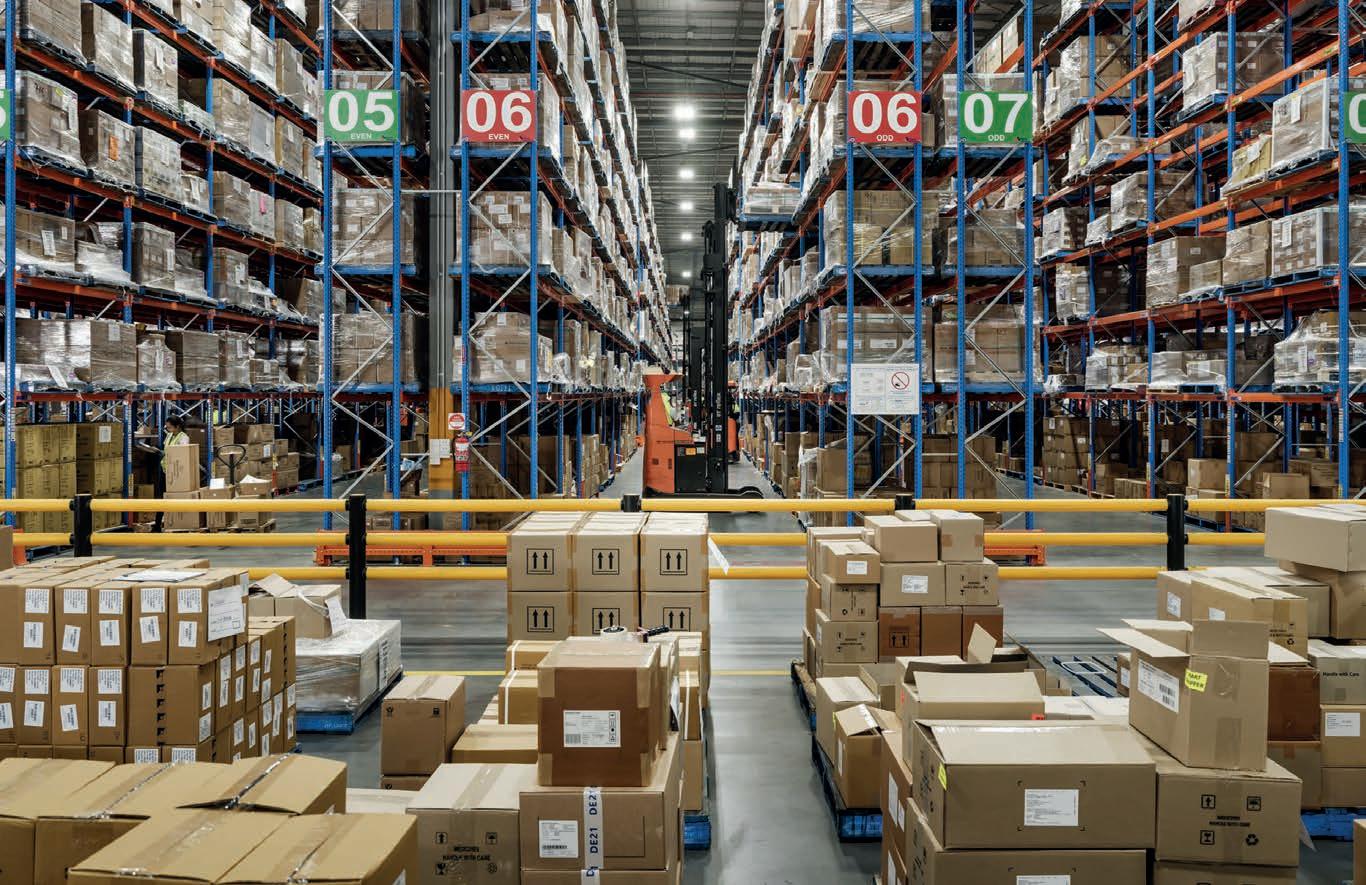

That’s why Conquest created their Intelligent Solutions Program, or ISP, to leverage their expertise and give you peace of mind that you’re getting the equipment you actually need to clean your facility and meet your safety obligations. It’s all starts with a complimentary site assessment.
A product solution specialist will come to your facility and make a recommendation based on their expert assessment of your facility size, surface type, safety considerations, operating environment, and cleaning requirements. No guess works. No fuss.
Step 2. Create a maintenance and servicing plan
Much like a passenger car, regular maintenance and servicing ensures
your floor cleaning equipment continues to operate to peak performance and minimises the risk of unplanned breakdowns or emergency repairs.
Conquest recommends creating and enforcing a clear maintenance plan encompassing daily pre-operation inspections, appropriate waste disposal and machine cleaning postoperation, and regular scheduled servicing. They can even help tailor a service and support package to your requirements. So, for you and the team onsite, it’s set and forget.
Step 3. Manage your fleet with Conquest FM
For those with multiple cleaning assets across various facilities and locations, Conquest’s latest offer – Conquest FM – simplifies fleet management and drives operational
efficiencies. The intuitive bolt-on system can be integrated with new and existing fleet assets and offers real-time usage data and reporting. Conquest FM also features built-in safety checks and performance monitoring to minimise downtime and promote operator safety. Accessible from a single portal and available on both desktop and mobile devices, Conquest FM puts you in full control of your floor cleaning fleet. No matter where you are.
TAKE CONTROL FLOOR CLEANING
As a busy Operations or Fleet Manager, you’ve got enough to do. But with Conquest behind you all the way, taking control of floor cleaning processes and assets at your operation is as simple as one…two… three.

MHD INDUSTRY NEWS & OPINION
12 | MHD MAY 2024
Bespoke 3PL Healthcare Solutions

HEALTHCARE LOGISTICS SOLUTIONS
• Flexible, bespoke 3PL/4PL contract logistics solutions
• IT integration capability
• Dedicated Account Management

WAREHOUSING AND DISTRIBUTION
• Over 60,000sqm dedicated 3PL space nationally
• New state of the art, modern, high security facilities
• Transport and Distribution
• Dedicated healthcare storage – ambient and cold chain temperature controlled, vault

• ISO 9001 and ISO 13485 accredited
• eQMS – Quality Management System
Contact Maria or Nick today to discuss a customised 3PL solution.
• Packaging/Repacking
• Continuous improvement
• Order to cash
Maria Machado
+61 438 620 294
• Customer Service
• Debtor management
Maria.Machado@sigmahealthcare.com.au
Nick Rimac
+61 429 169 832
Nick.Rimac@sigmahealthcare.com.au
QUALITY AND COMPLIANCE VALUE ADDED SERVICES
142599
TRENDS SHAPING AUSTRALIA’S TRANSPORTATION AND LOGISTICS INDUSTRY
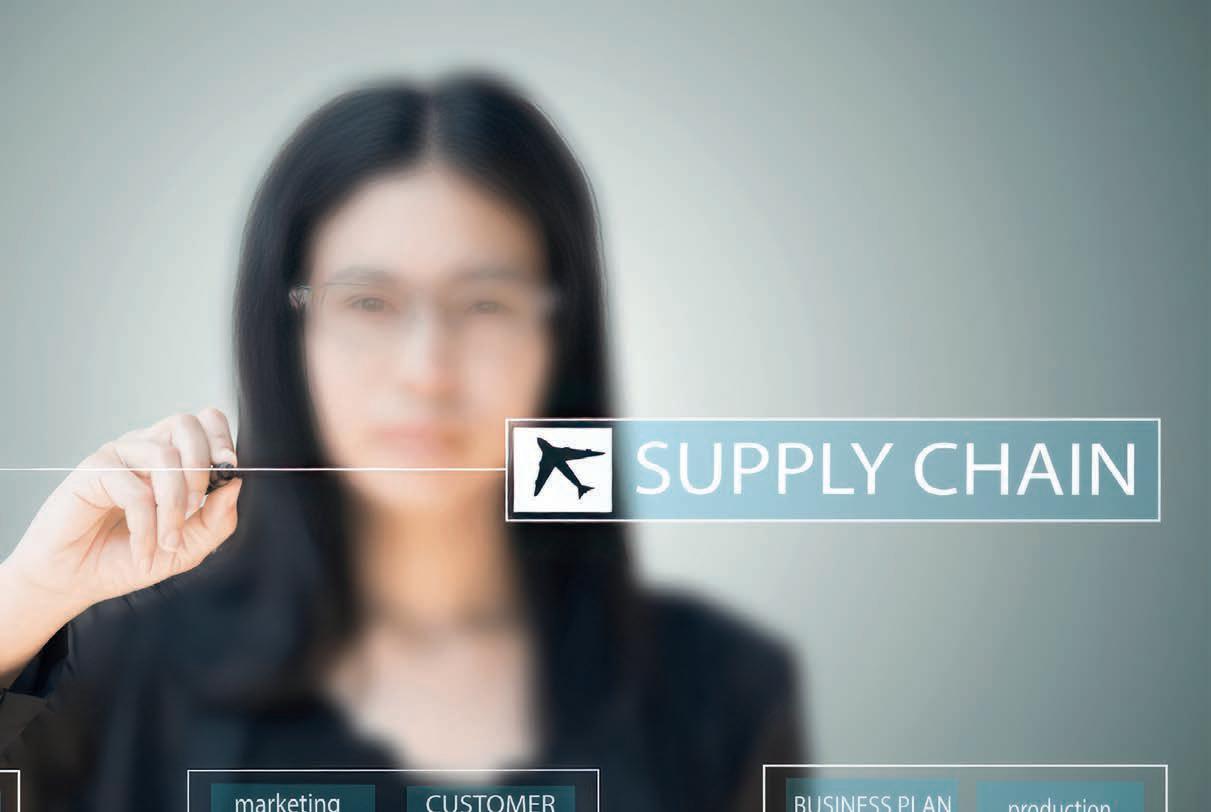
Peter Langley, Vice President, FedEx Express Australasia explains in this op-ed for MHD the four main trends shaping Australia’s transportation and logistics industry as it significantly expands in 2024.
The transportation and logistics industry serves as the backbone of global e-commerce and business operations, seamlessly connecting the online and offline worlds. In Australia, the industry is poised for significant growth, with projections estimating a rise to USD 94.10 billion in 2024 and further expansion to USD 113.94 billion by 2029[1]. Here, we delve into the prevailing trends shaping the landscape of Australia’s
transportation and logistics industry in the year 2024.
1. Data-led decision-making drives the industry forward
In the dynamic landscape of Australian business, digital innovation drives steady change. We are seeing an increasing number of companies recognising the importance of investing in data and digital technologies to drive their operations forward. A significant milestone was reached at the beginning of 2023, with 53 per cent of organisations in Australia planning to increase technology spending from 10 to 20 per cent.[2] This surge in investment underscores a strategic shift towards
The partnership between e-commerce and transportation and logistics is driving businesses and e-tailers to reach beyond traditional borders.
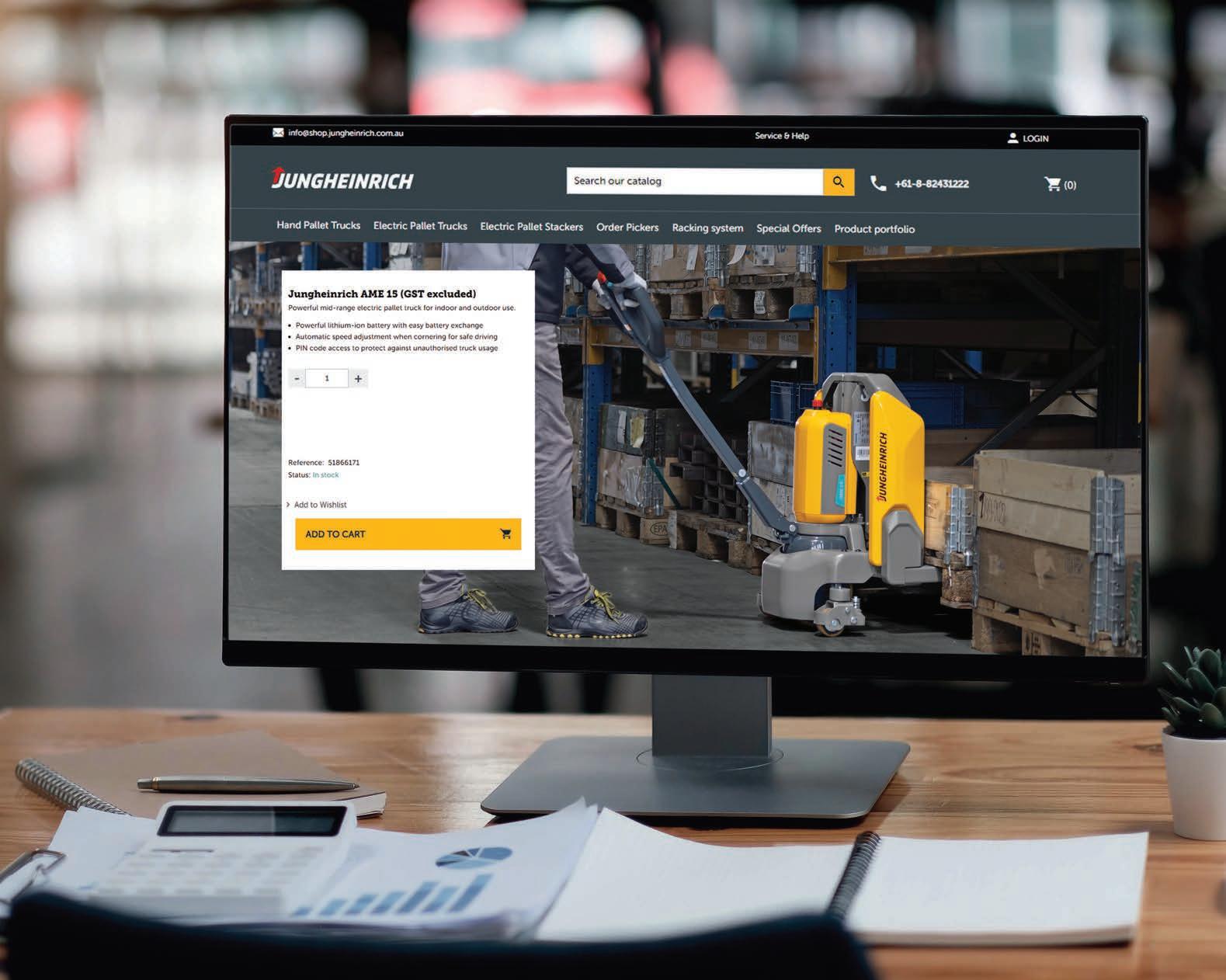
embracing technology as a catalyst for growth and competitiveness.
At FedEx, we have always known the power of the data we have in our hands. In fact, 45 years ago our founder, Fred Smith, said that the information we hold about the package is just as important as the package itself. But it is only with today’s computing power, data analytics, predictive modelling, AI and machine learning, that we are able to fully harness the power of this data, for the good of our company and our customers.
We see more businesses taking advantage of advanced analytics and technologies to support innovation, improve supply chain visibility and predictions and even minimis
MHD INDUSTRY NEWS & OPINION
Image: Shutterstock/Kritsana
Maimeetook 81.
14 | MHD MAY 2024



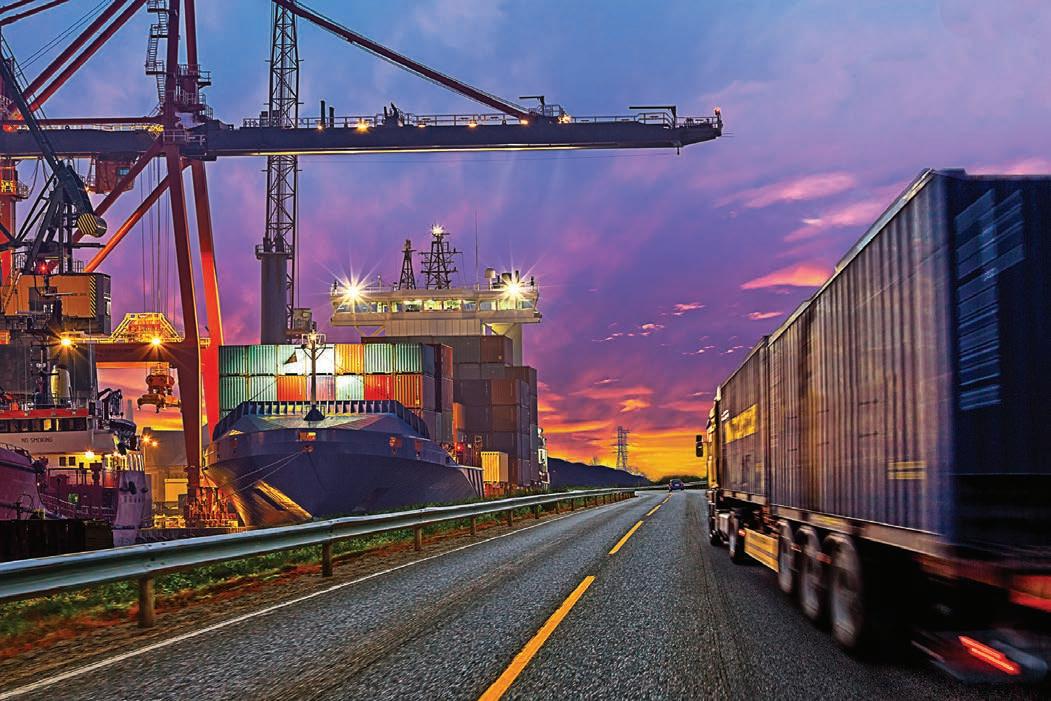
emissions. The application of advanced technologies to unlock the power of data will become ever more firmly embedded in how transportation and logistics providers empower SMEs to drive their business growth.
2. L everaging Data for Environmental Goals
Operating in a more sustainable manner is both a business imperative and an opportunity to cultivate trust with customers. More than ever before, customers today demand more sustainable products and services [3].
Thanks to advancements in digital solutions, businesses are able to harness data and analytics to monitor and achieve their sustainability objectives. These digital tools can provide businesses with estimates of emissions throughout their supply chains, enabling informed reporting and future planning. By leveraging such solutions, businesses can align with customer expectations for more sustainable products and services and advance their own environmental initiatives.
At FedEx, we have introduced FedEx® Sustainability Insights to
provide customers more visibility over the carbon footprint of their eligible shipments with estimates of their CO2 emissions, leveraging FedEx’s network data[4].
3. Easier Expansion to New Markets
With the right transportation and logistics provider, expanding into global markets is becoming more accessible for e-commerce businesses looking to grow beyond their local market.
A great starting point for those Australian businesses is taking on the New Zealand market. New Zealand is not only Australia’s closest natural ally but also a strong Trans-Tasman trade partner for small and medium businesses.
The Australia New Zealand Closer Economic Relations Trade Agreement and Single economic market has boosted and improved connectivity on the Trans-Tasman trade route may offer fertile ground for businesses to capitalise on the robust cross-border trade partnership between Australia and New Zealand.
Today, businesses can take advantage of improved connectivity on the Trans-Tasman trade lane, facilitated by the FedEx Trans-
Tasman service. Currently, this service offers regular flights connecting key cities such as Christchurch, Auckland, Melbourne, and Sydney, providing seamless access to markets and fostering business expansion opportunities.
4.Integration between E-commerce and Transport and Logistics
In today’s digital world, the partnership between e-commerce and transportation and logistics is driving businesses and e-tailers to reach beyond traditional borders. Success now hinges on delivering products quickly and reliably to customers worldwide. Adopting this integration may enable businesses to seize opportunities and navigate challenges in the dynamic marketplace of 2024.
Supply chains are rapidly evolving into smarter, techdriven ecosystems, revolutionising operations and paving the way for unprecedented transformation in the transportation and logistics sphere. As digital innovation accelerates, businesses should prioritise efficiency, transparency, and global reach to maintain a competitive edge and achieve sustained growth and success in the evolving landscape.
2024 presents a landscape of both challenges and opportunities for the industry. Supply chains are evolving into smarter, techdriven ecosystems, marking a profound shift in operations. The pace of digital innovation is poised to accelerate, heralding an era of unprecedented transformation in the supply chain and transportation and logistics spheres.
Disclaimer: The information in this article is of general nature only. It is not intended to address circumstances of any specific entity or individual.

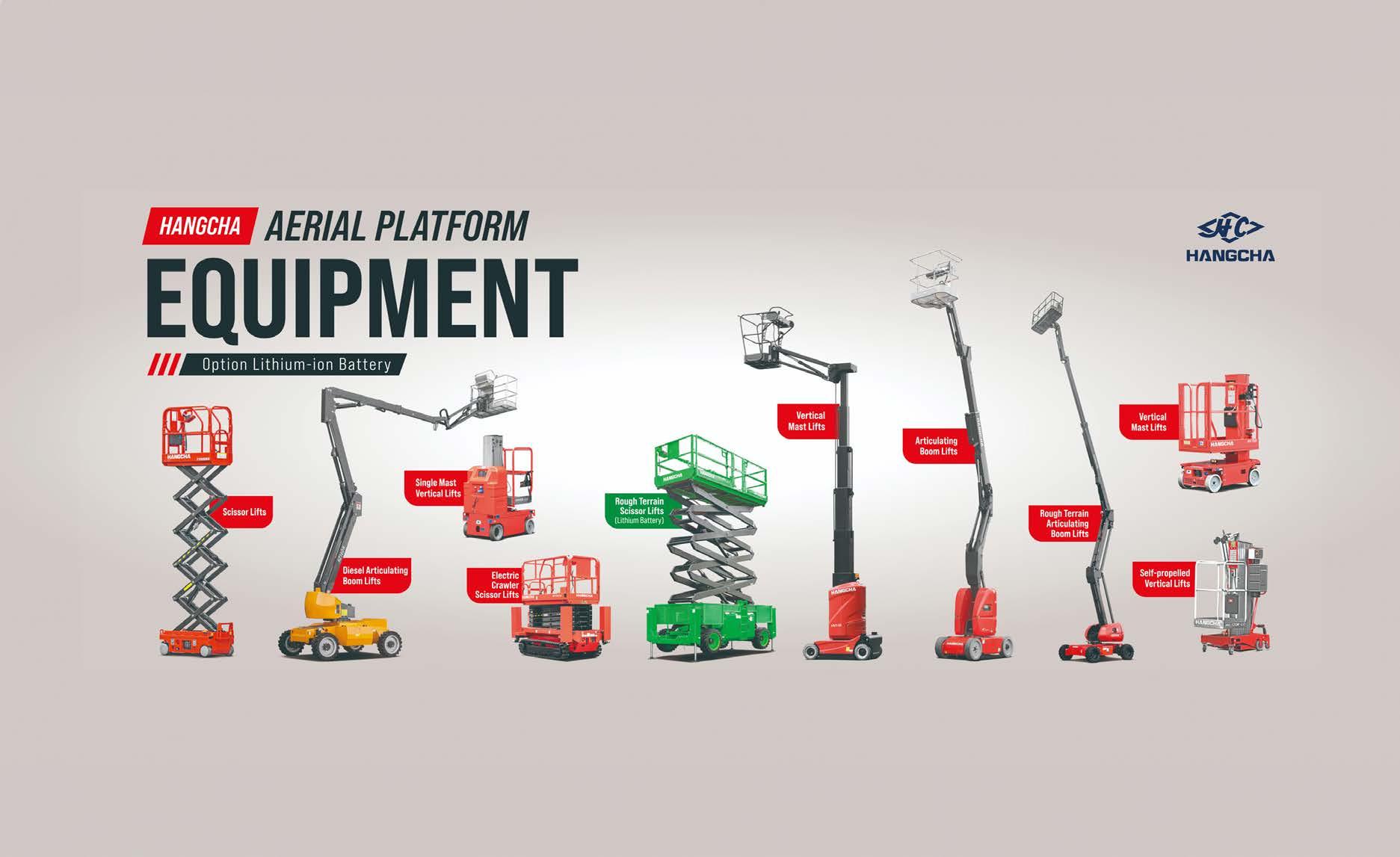
[1] Freight & Logistics Market in Australia
[2] 2023 Tech Trends Report
[3] McKinsey Consumer Research
[4] https://www.fedex.com/en-au/ about/sustainability/carbonfootprint-insights.htm
Peter Langley, Vice President, FedEx Express Australasia
MHD INDUSTRY NEWS & OPINION
16 | MHD MAY 2024
In the dynamic landscape of Australian business, digital innovation drives steady change. Image: Shutterstock/Nightman1965.

SKYWARD BOUND: HANGCHA’S AERIAL WORK PLATFORMS
In the rapidly evolving landscape of industrial equipment, the need for innovative, reliable, and efficient solutions has never been more critical.
In response to the growing demand for versatile and safe aerial working solutions, Hangcha has expanded its product range to include a series of aerial work platforms.


Manufacturing forklifts since 1956 Hangcha Forklifts Australia has been set up to support our national dealer network. Call 1300 399 687 to be put through to your nearest local dealer. www.hangchaaustralia.com.au 20-24 Bessemer Drive, Dandenong South, VIC, 3175 sales@hcforkliftau.com Come visit us at CeMat for more information about our aerial platforms. Stand 420 from July 23-25

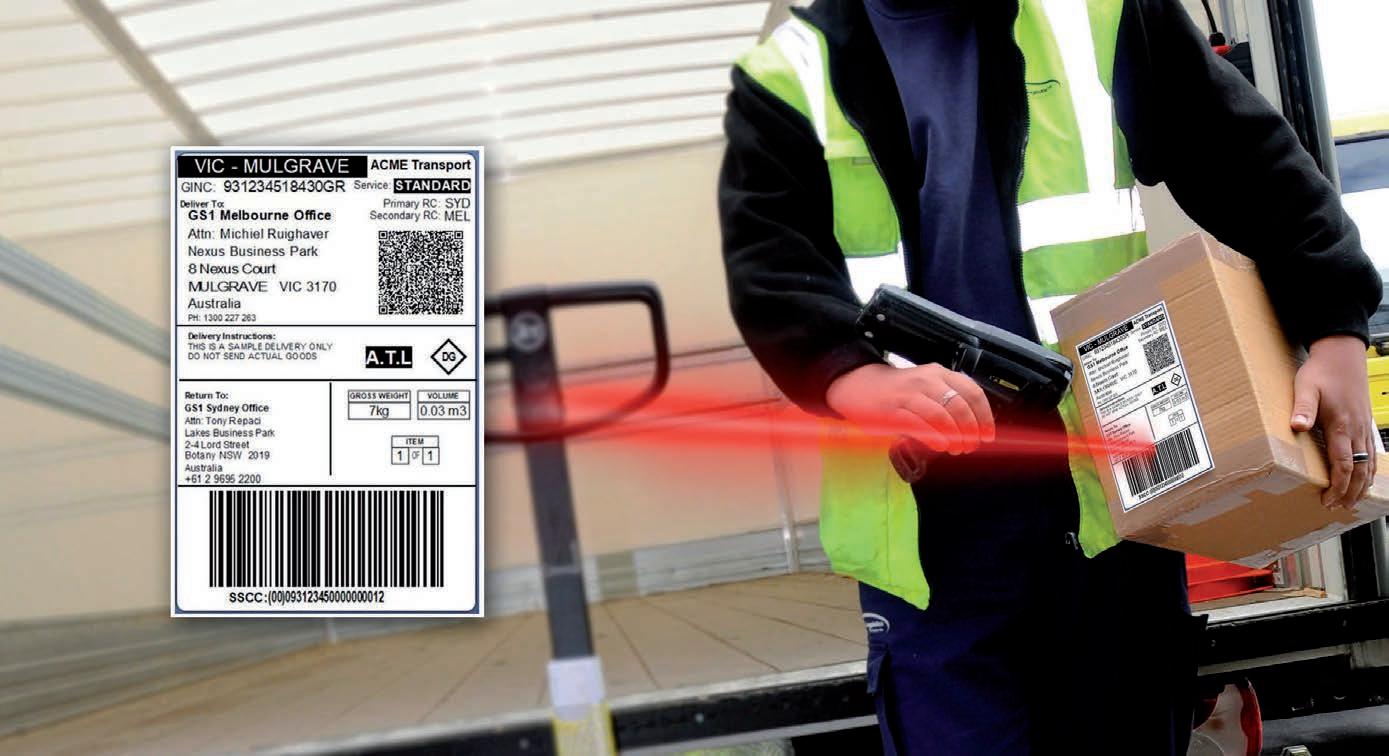

TOLL ANNOUNCES FACILITY CONSTRUCTION
Toll Group has announced the construction of a new, 10,000 sqm state-of-the-art healthcare facility at Tullamarine, near Melbourne, next to what will be one of its partners’ future manufacturing sites.
As a leading supply chain partner to CSL Seqirus, the facility is being custom built to support CSL Seqirus’ operations.
Toll notes by having its warehouse and DC next to what will be CSL Seqirus’s manufacturing site, it will bolster Toll’s tailored support for CSL Seqirus by handling both finished goods distribution and supplying raw materials and packaging to the CSL Seqirus manufacturing facility.
“We are proud to strengthen our partnership with CSL Seqirus and expand our footprint in the healthcare logistics sector,” says Perry Singh, President, Government & Defence at Toll.
“This new facility exemplifies our commitment to delivering high-quality, tailored supply chain solutions to meet the evolving needs of our customers.”
The new warehouse marks Toll’s commitment to providing comprehensive logistics solutions for the healthcare sector.
With operations commencing in Tullamarine, Toll aims to enhance efficiency and timeliness through just-in-time services.
The collaboration between Toll and CSL Seqirus underscores a shared dedication to innovation and excellence in healthcare logistics.
In addition to the Tullamarine facility, in April 2023 Toll opened new warehouse in Richlands, Queensland, further demonstrating its dedication to enhancing healthcare logistics infrastructure across Australia.
“The facilities are part of Toll’s
broader multi-million-dollar investment creating advanced warehouse management solutions to meet the changing dynamics in the healthcare sector, and providing customers with the logistical support they need,” adds Perry.
Toll’s facility will be situated adjacent to the soon-to-becompleted CSL Seqirus plant, a new world-class biotech manufacturing facility in Australia which will supply influenza vaccines to Australia and the rest of the world.
The state-of-the-art facility will use innovative cell-based technology to produce influenza vaccines for use in both influenza pandemics and seasonal vaccination programs – and will be the only cell-based influenza vaccine manufacturing facility in the Southern Hemisphere.
Toll’s warehouse and DC is due to commence operations in August 2024.

MHD INDUSTRY NEWS & OPINION
MHD MAY 2024 | 19
The new warehouse marks Toll’s commitment to providing comprehensive logistics solutions for the healthcare sector. Image: Toll Group.
VICTORIAN GOVERNMENT INVESTING IN DRIVER TRAINING
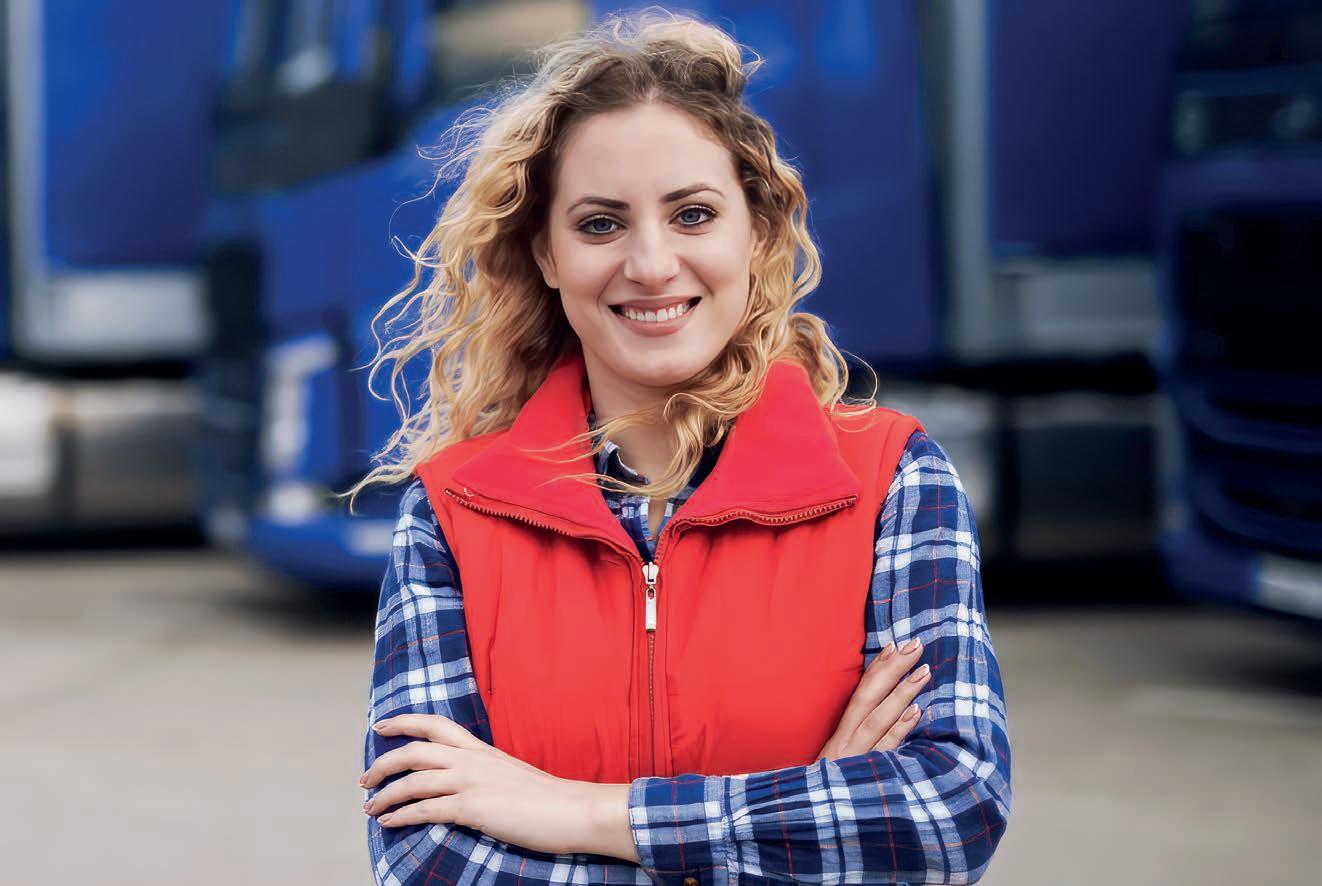
Through a partnership with the Victorian Transport Association (VTA), the Victorian government is investing an extra one million dollars in training more heavy vehicle drivers to keep Victoria’s supply chains moving.
Premier Jacinta Allan’s department notes this partnership offers accredited training for aspiring heavy vehicle drivers and assists them in securing employment as part of the VTA’s successful heavy vehicle driver delivery program.
“This partnership will see more Victorians get skilled up and behind the wheel to keep our state’s multibillion-dollar freight industry moving,” says Minister for Ports and Freight, Melissa Horne.
Since its launch in 2016, the program
has received continuous investment from the Labor government, resulting in the training and placement of nearly 400 skilled drivers on our roads.
In addition to improving safety on our roads, the program aims to tackle heavy vehicle driver shortages, tailored to attract and retain younger drivers for Victoria’s critical supply transport and logistics supply chains.
“The transport industry requires qualified and job-ready drivers to ensure Victorians can maintain the high living standards they are accustomed to and help address supply chain challenges.”
Victoria’s freight industry, contributing $21 billion annually to the state’s economy, employs more than 260,000 Victorians who play a
The Victorian government and Victorian Transport Association’s partnership offers accredited training for aspiring heavy vehicle drivers and assists them in securing employment.
crucial role in maintaining the state’s supply chains.
The VTA coordinates training with qualified providers and helps graduates secure stable positions with reputable transport companies.
“Skilled driver shortages in the transport industry is affecting our members who are under constant pressure to deliver around the clock and on time – we support this initiative,” says Transport Workers Union Branch Assistant Secretary, Mem Suleyman.
This partnership between government and industry to tackle skill shortages, follows the success of the 2023 Freight Industry Training for Jobseekers project, which facilitated employment for more than 125 individuals in freight and warehousing.
MHD INDUSTRY NEWS & OPINION
20 | MHD MAY 2024
Image: Shutterstock/ Aleksandar Malivuk.












Reliability for over 65 years
Experts for innovative Intralogistics
swiss engineering
Reliability for over 65 years
Experts for innovative Intralogistics swiss engineering
See the exclusive interview with Ferag in this issue’s article: Warehouse Management Systems - How not to get burnt
APEX BUSINESS PARK NOMINATED FOR MHD SUSTAINABLE WAREHOUSE COMPETITION
In a significant nod to its sustainable initiatives, Apex Business Park, developed by The GPT Group, has been nominated for the MHD Sustainable Warehouse Competition. This recognition underscores the park’s commitment to pioneering sustainable practices within the logistics and warehousing sector, a crucial step towards a greener future.
Located in the burgeoning corridor between Brisbane and Ipswich, Apex Business Park stands out not only for its strategic location but also for its exemplary sustainability credentials. With facilities designed to achieve a minimum Five-Star Green Star Design and As-Built rating, the park embodies the cutting-edge of ecofriendly industrial development.
Initiatives such as rooftop solar arrays, on-site batteries, and the use of low-carbon concrete highlight a comprehensive approach to reducing emissions and harnessing renewable energy sources.
Sustainability at Apex Business Park extends beyond energy efficiency. The park’s rainwater harvesting system, which supports both toilet facilities and landscaping, exemplifies a holistic environmental ethos. Moreover, the deployment of LED lighting and the choice of low volatile organic compound (VOC) materials, paints, and adhesives ensure a healthier environment for both the planet and the park’s workforce.
The MHD Sustainable Warehouse Competition, aligning with the MEGATRANS2024 exhibition,
seeks to celebrate such innovative efforts in warehouse sustainability.
Apex Business Park’s nomination reflects its role as a frontrunner in integrating sustainable practices with logistical efficiency and operational excellence.
As businesses increasingly prioritise green certifications and employee wellbeing, Apex Business Park’s development by GPT, a company with a rich heritage in high-quality property development, sets a benchmark for the industry. With its comprehensive suite of sustainability-focused features and amenities designed to enhance staff wellbeing, Apex Business Park is not just a logistics hub but a blueprint for the future of sustainable industrial development.
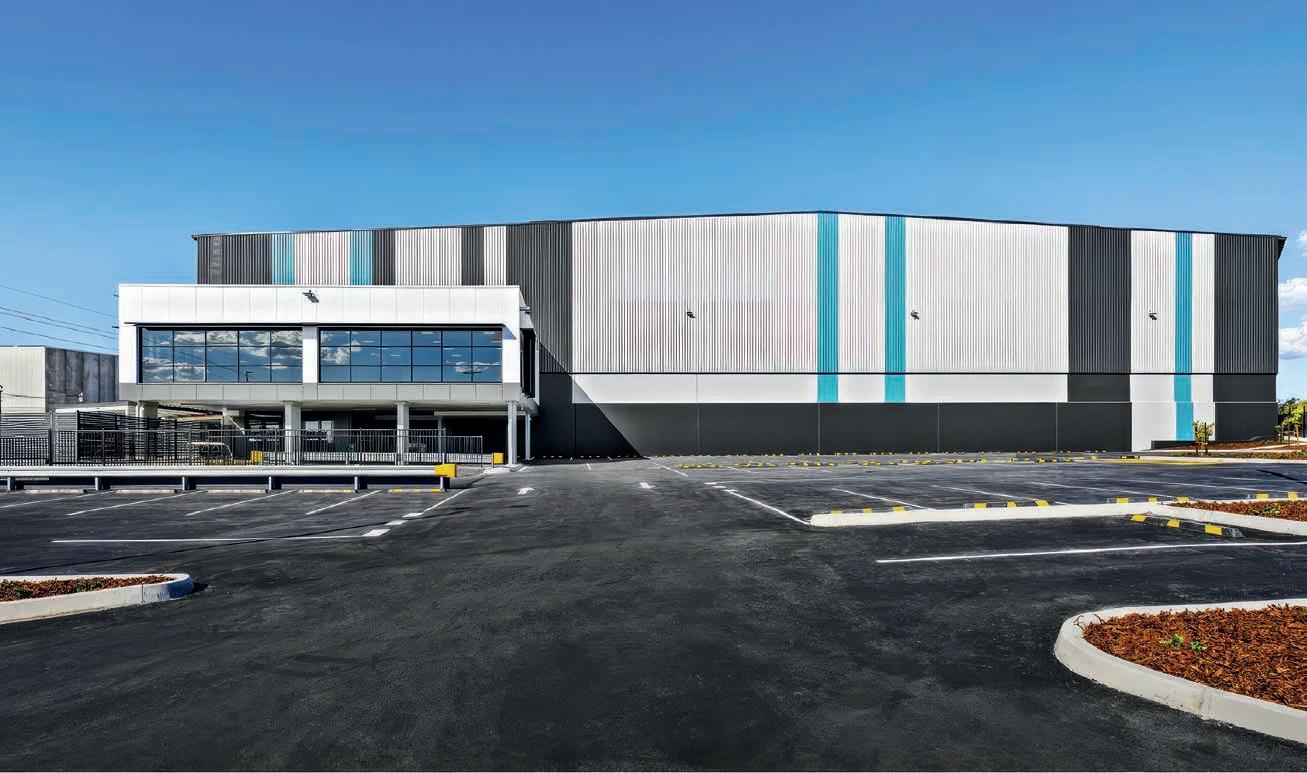
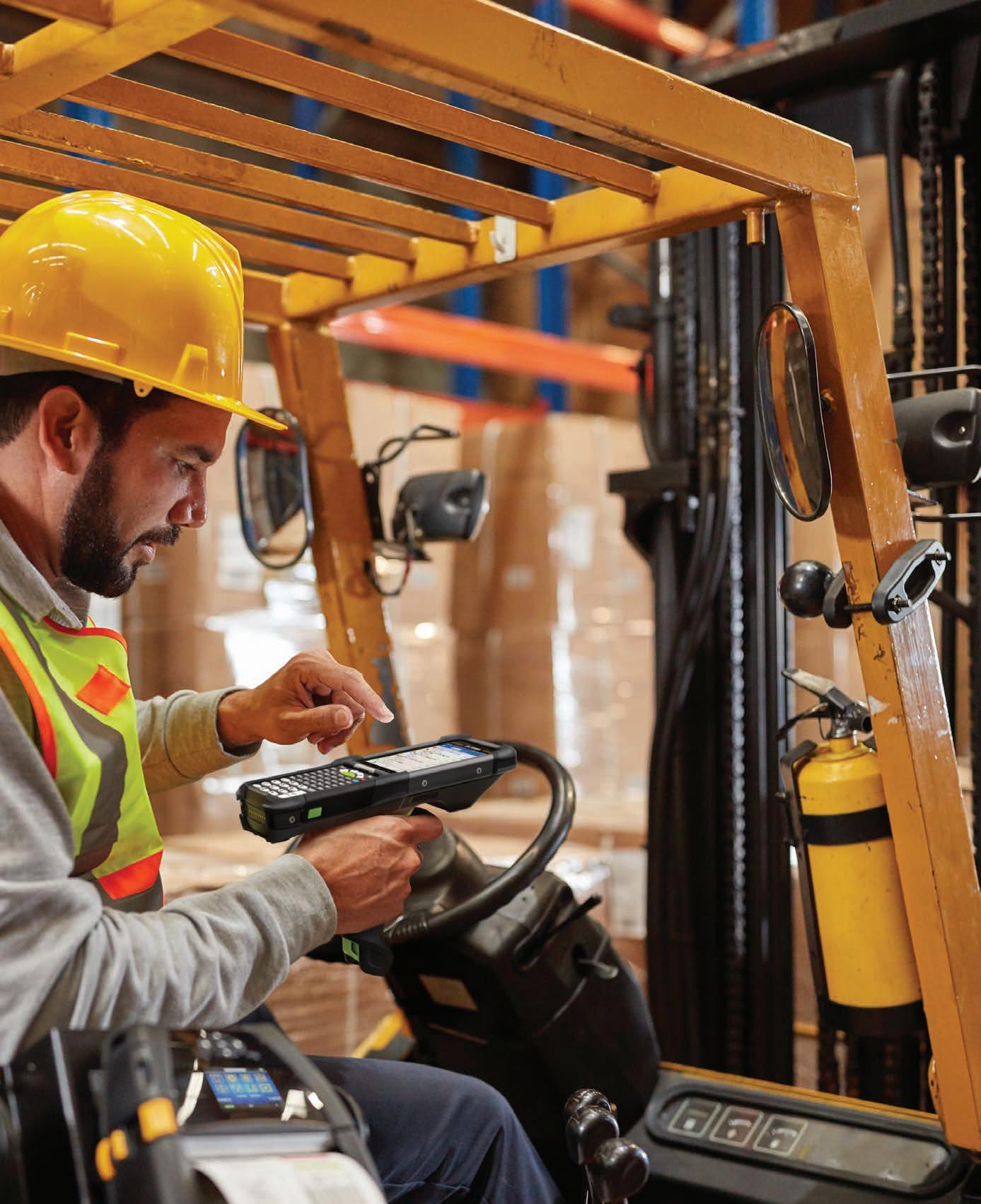
MHD INDUSTRY NEWS & OPINION
22 | MHD MAY 2024
Apex Business Park. Image: GPT Group.
Need to get your RF Scanning operations up and running tomorrow? Have issues with local wireless connectivity?
Meet the Zebra MC9400 Series now with 5G Connectivity. More Powerful Extended Range Enhanced 5G Connectivity
Discover how Zebra can revolutionise your workflow, enhance productivity, and streamline your operations.
Skywire Australia is excited to offer you a no-obligation, exclusive opportunity to put Zebra devices to the test in your warehouse and retail operations.





THE EVOLUTION OF WAREHOUSE OPERATIONS HAS ARRIVED.
SCAN TO GET STARTED FREE 6 WEEK TRIAL
A RENOVOTEC GROUP COMPANY AUSTRALIA | NEW ZEALAND info@skywire.com.au www.skywire.com.au Skywire is part of the Renovotec Group of Companies
EXPLORING THE RAIL FREIGHT OPPORTUNITY IN AUSTRALIA
Prological’s Peter Jones explains in this MHD op-ed the benefits of rail freight and how adopting aspects of the European model can help us decrease our reliance on road freight.
The benefits of rail freight compared to road transport are transparent. Trains use significantly less fuel to transport freight long distances, carry far more weight and volume, reduce highway congestion, improve safety by reducing the strain on commercial trucking and provide reliable and on-time delivery and scheduling.
Despite this, just two per cent of freight between Melbourne and Sydney goes by rail, down from near 40 per cent in the 1970s.
According to research by The Bureau of Infrastructure and Transport Research Economics, for everyone per cent of freight shifted from truck to rail nationally, an average of $71.9 million would be saved annually in terms of environmental damage, road conditions and pollution-related health outcomes.
In 2024, Australia is seeking global partners to transition our rail network and decarbonise our transport sector, which accounts for 19 per cent of our country’s total carbon emissions.
The Inland Rail Network has been set up to reduce our reliance on roads for moving freight, while high speed rail has become a priority on the Australian government’s agenda, even setting up a High Speed Rail Authority in June last year 2023.
The goal of our Inland Rail Network will be to connect Melbourne and Brisbane with a 1700km end-to-end rail freight corridor spanning rural Victoria, New South Wales and South East Queensland.
This will not only connect our rural industries with ports and logistics centres in the major cities, but also link Australia’s 2nd and
3rd largest cities with a faster rail service unencumbered of the constraints the existing ‘coastal via Sydney’ option is constrained by.
This investment in rail freight begs the question, why hasn’t Australia been able to reduce its domestic road freight? The primary answer is cost.
The fixed costs of the rail infrastructure and operations are spread across lower volumes, raising the cost per unit being transported.
Combined with the transloading and terminal infrastructure at both ends of the journey means the transition to rail hasn’t been financially viable in recent decades.
In addition, all rail options being offered to date involve the freight being containerised (excepting SCT’s wagons), which then requires significant changes in infrastructure for both senders and receivers. It also requires the impost of the land bridge costs at the origin and destination for pick-up and delivery of the containers.
To solve this problem, I had what I thought was an original idea. To show engineering firms and our rail industry how this might work, I had briefed an animator to create a video of the concept, only to have a colleague then find my ‘original idea’ was already operational in Europe with some maturity and very efficient, removing many of the barriers of road to rail transition.
At the end of 2023, I travelled to the intermodal terminal Bettembourg-Dudelange in Luxembourg to explore their systems for rail freight and determine whether such processes could be used in Australia to assist in road to rail conversion.
A new solution
In April 26 1956, a converted World War II tanker became the first ever container ship, sailing from the Port of Newark to Houston with 58 aluminium boxes.
Since then, shipping containers have become standardised, and so
have all containers for road and rail freight.
The inefficiencies of using containers for rail freight has held back its adoption, but European engineers have been implementing different systems to change this.
For instance, to better integrate freight generators and customers, engineers made modifications to semi-trailers so that they could be lifted directly onto the train, which results in a lot less movement and less time taken through the terminal.
To understand how Europe compares to Australia’s infrastructure and processes, it’s helpful to consider the ‘generations’ of converting road to rail.
With better infrastructure in place, Europe is on its fourth generation of rail freight – in moving rail containers off trains, Europe has seen four generations of process evolution. Australia is behind this development, having only experienced the first two generations of rail freight.
• 1st generation – Forklift, which evolved into a reach stacker
• 2nd generation – Rail mounted gantry cranes
• 3rd generation – Specially designed semi-trailers able to be gantry crane lifted (Europe only)
• 4th generation – Driving semitrailer directly onto the train (Europe only)
Data was gathered while in Europe of the efficiency gains as each generation was developed. From a terminal handling perspective alone, Gen 1 to Gen 2 offers just over a 100 per cent increase in throughput capability.
Gen 2 to Gen 3, offers another 25 per cent, but more than 50 per cent cost benefit in land bridge costs while Gen 4 in nine times more efficient inside the terminal and offers the same 50 per cent benefit on the land bridge costs.
As we expect, when systems and
MHD INDUSTRY NEWS & OPINION
24 | MHD MAY 2024

process develop across generations, we do expect better outcomes. In relation to Intermodal processes, this is what has happened in Europe.
Australia has its own unique environment and infrastructure, so it’s unfair to suggest implementing these new strategies within our unique environment would or should be easy.
Having said that, the gains being achieved in Europe and uptake of Gen 4 by industry is achieving the objectives Australia seeks to achieve. Therefore, exploring these and other new strategies in our supply chain should always be encouraged.
CargoBeamer, another intermodal transport system for shifting semitrailers onto rail, may work very well within Australian Port operations because it requires a much smaller footprint and can load and unload whole trains very fast (in minutes).
In this system, the semi-trailer is uncoupled from the tractor unit inside the terminal, where the driver and tractor unit can leave the terminal immediately or take another semi-trailer with them.
A terminal vehicle places the semitrailer onto an awaiting loading pallet next to the railway tracks which is used to lift it on to the wagon.
When the train arrives at the terminal, the semi-trailers are loaded off the train simultaneously and automatically, immediate followed by the loading of the prestaged outbound trailers.
The drawback of this system is it has the highest CapEx of the third and fourth generation options employed across Europe, but when one piece of infrastructure, 600m long up can handle one million TEUs per annum, on a footprint of
30,000 sqm, the cost per container is very small when compared to the alternate infrastructure investments required to do the same task.
The challenge for Australia is that the new rail terminals being developed are being conceived around what we’ve always had – what I would term as secondgeneration technology and engineering.
To develop innovative new strategies to decrease our reliance on road freight, we might need to look to Europe to understand the opportunities.
In order to maximise Australia’s exciting investments such as the Inland Rail Project, we could use some of Europe’s advanced thinking and engineering.
Peter Jones, Managing Director, Prological
MHD INDUSTRY NEWS & OPINION MHD MAY 2024 | 25
Peter Jones with Anna Samsonova (International Commercial Manager at Lohr Industrie) and Nicolas Bertrand (COO) at Lohr’s Head Office in Strasbourg. Image: Prological.
SEW EURODRIVE SUPPORTING MERCURY AWARDS
MHD sat down with SEW Eurodrive to talk about why it’s sponsoring the MHD Mercury Awards – a dinner gala celebrated biannually as part of MEGATRANS.

In 2024, the Mercury Awards will be held alongside the Australian Bulk Handling Awards, which recognise excellence in the bulk solids handling sector. With two awards programs running, a joint gala evening will be held featuring both sets of awards, providing an increased brand visibility and larger attendance for the evening.
NOMINATING CRITERIA AND INSTRUCTIONS:
Nominating criteria and instructions:
• Nominating is free and must be completed using the online form by 11:59pm Friday 5 July 2024.
• Nominations are unable to be
withdrawn once nominations are closed.
• Your nomination must be completed in one sitting; a partially completed form cannot be saved and reopened at a later date.
• A ll products and/or technologies must be manufactured and/ or commercially available in Australia.
• Please have any supporting documentation (i.e., brochures, photographs, testimonials) ready to upload. No single file should exceed 3MB in size. Any file above that size won’t be provided with judging files.
• A ll nominations must be accompanied by a high-resolution image (at least 1MB in size) suitable for print publication.
• A ll finalists are required to have a representative at the Gala Awards evening should they be successful. By submitting a nomination, you give Prime Creative Media permission to publish all or part of your nomination in MHD Supply Chain Solutions or another suitable publication.
The MHD Mercury Awards gala dinner is an opportunity to acknowledge and celebrate the outstanding achievements and successes of companies and
SEW Eurodrive is a sponsor of the 2024 Mercury Awards: Image: SEW Eurodrive.
MHD MERCURY AWARDS 26 | MHD MAY 2024

individuals in Australia’s logistics industry.
In 2024, the awards will be held on Wednesday September 18 in Melbourne from 7pm till late with the dress code being cocktail.
These awards highlight the innovation and excellence that abound within the logistics industry, which unfortunately often don’t get recognised.
Encompassing the entire nation’s logistics sector –from warehousing through to sea freight and everything in between, the awards acknowledge not only the major players in these industries but also the rising stars of tomorrow.
Sponsoring these awards is a great opportunity for your organisation to join this well-deserved recognition of our logistics industry. As a sponsor, you will have your name associated with the prestigious award of your choice, and the privilege of presenting that award to the well-deserved winner. You will also receive tickets to attend the event.
And, of course, you will be acknowledged as a sponsor in all of our pre and post event coverage.
Don’t miss out on this opportunity to be a part of the MHD Supply Chain Solutions Mercury Awards, and to be a partner in recognising and rewarding excellence and innovation in the logistics industry.
SEW EURODRIVE SPONSORING THE AWARDS
SEW Euro Drive says it’s sponsoring MHD’s Mercury Awards because it values supporting the supply chain and logistics industry.
“It’s a privilege to present an award that goes to a well-deserved winner, innovator or company that’s dedicated to their craft,” explains Katrina Dalgleish, Marketing Manager, SEW Eurodrive.
As a long-time sponsor of the award, SEW recognises the importance of innovative manufacturing and assembly and product solutions.
The Mercury Awards provides an opportunity to highlight the achievements of the often-overlooked logistics industry, which is integral to supply chain, and usually taken for granted.
There’ll be a diverse range of nominations across the logistics sector, including major logistics companies, small entrepreneurs, business leaders – many trailblazers within the field.
“There will be an acknowledgment of emerging talents as well as steadfast industry leaders who have provided a solid foundation,” says Katrina.
“It’s great to see a larger spotlight shone on those advancements and contributions across all sub-sectors within the industry. It’s also a great networking opportunity, helping foster growth, determination, and relationships.
“This is all because the person who’s sitting in that room could be the next industry expert who could be inspired to develop the next big thing.
“SEW Eurodrive has had a long-time connection with the logistics industry. Our own logistics sector relies on all those in the industry working together, and that’s why we really value it.” ■
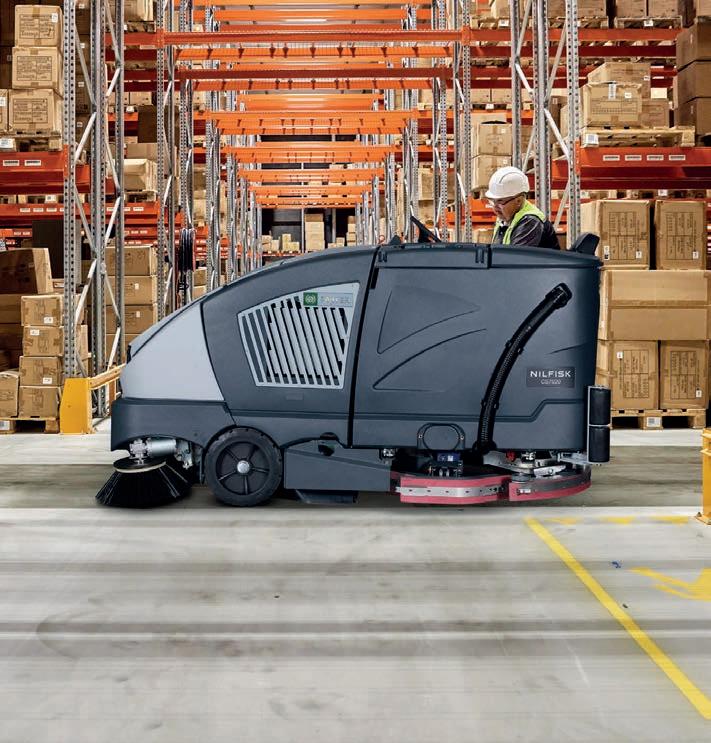


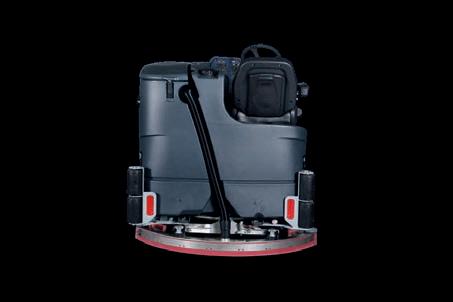

MHD MERCURY AWARDS
WHY SUPPLY CHAIN IS NOW MISSION CRITICAL FOR THE C-SUITE
Global disruptions have exposed vulnerabilities in fragile supply chains, prompting more C-Suite leaders to prioritise the strength of their networks. Peter Jones, Managing Director at Prological, explains the developing role of logistics and supply chain as a strategic growth strategy in boardrooms across Australia.
No longer the sole responsibility of operations departments, supply chain has quickly become as complex as businesses taxation and foreign exchange, matters that have long been in the boardroom. The advent of integrated systems, automation, AI, next generation warehouses and B2C’s new capability in fulfillment and customer visibility demands a clear and aligned business strategy. Once tactical tasks, these modern technologies are now necessities for the battle to win and retain customers, says Peter Jones, Managing Director at Prological.
According to Peter, its not just the complexity that has escalated in the last few years, but the scale of supply chain investment now required to be an industry sector leader.
“For many businesses, supply chain is the highest level of investment, which will only escalate as capital investment opportunities continue to drive down operational costs, open up customer facing visibility and expedite order fulfillment,” Peter says.
“A simple example is nextgeneration, highly-automated warehouses enabling rapid fulfillment turnarounds, with very high CapEX’s but very low OpEx’s. These facilities can run into hundreds of millions in capital, requiring careful operational expense forecasting and solid medium to long term business strategies. This
is a new reality and beyond the remit of every functional logistician in the nation, requiring understanding and approvals from the C-suite and often, boards.”
UNLEASHING AGILITY, GROWTH & COMPETITIVE ADVANTAGE
By tightly integrating logistics mastery with boardroom vision, companies can transform supply chain functions from nodes of risk and costs into critically leverageable assets for competitive advantage. When optimised, agile supply chains unlock new revenue streams, fuel expansion into new markets, and catalyse gamechanging innovations.
“Over the next 5-10 years, we’ll see a clear delineation between the ‘haves’ and ‘have-nots’ in supply chain capability and market share,” predicts Peter. “The ‘haves’ invest in sophistication, robustness, and flexibility while the ‘have-nots’ revert to pre-pandemic practices.”
Peter advocates viewing supply chain as a core business competency requiring long-term planning and investment - a shift from traditional cost-cutting mindsets but one that fortifies resilience.
“Those businesses continuously refining logistics for resilience and responsiveness will find opportunities for growth, even among daunting headwinds, and in the good times,
will thrive, win market share and will be respected by their customers,” he says. “Businesses relying on outmoded, brittle supply chain infrastructure and models will be constantly reacting - bleeding revenue, profits and market share with each new disruption. This pivotal strategic divide will reshape industries in the next few years.”
Until recently, supply chain management was an undervalued corporate function – traditionally viewed as an operational necessity but rarely seen as a strategic asset. Those days are rapidly fading into the rear-view mirror, however, with a series of catastrophic global disruptions mercilessly exposing the vulnerabilities of fragile, inflexible supply chains, delivering a reality check to businesses worldwide.
The COVID-19 pandemic was the precipitating event, creating a “perfect storm” of logistics nightmares as lockdowns, labour shortages, and historic consumer demand swamped the intricate network of suppliers, manufacturers, transportation providers and distribution centres required to move goods to market. This initial chaos was then compounded by the geopolitical shockwaves of the Russia Ukraine war, snarling global trade routes and energy supplies.
Peter recounts how companies were left dangerously exposed, with
28 | MHD MAY 2024 MHD COVER STORY
“Recent Accenture research found 43 per cent of supply chain executives cite lack of strategic alignment as the reason they can’t unlock more enterprise value.
product lead times skyrocketing from weeks to over nine months as pipelines stalled. “Businesses found themselves very thin on inventory as their supply chains had been built on a ‘just-in-time’ strategy with minimal buffers. It put businesses under great financial stress very quickly,” he says. “That’s what took supply chain disruption right into the C-suite and boardroom conversations.”
The rapid awakening of severe disruptions has jolted senior executives around the world out of their lack of detailed awareness of supply chain, in turn making it a top priority.
The 2024 Prological Supply Chain Pulse Check Survey found 57 per cent of over 200 logistics professionals believed the C-suite is now more focused on supply chain resilience than before the pandemic.

“With supply chain now a critical focus for the C-suite, visibility is more important than ever,” Peter states. “The survey shows driving new investments and improving endto-end supply chain visibility are key focus areas for business leaders this year. It is clear businesses have seen the importance of a strong supply chain. In response, evidenced by the survey results, we are seeing rapid upgrades in supply chain capability and investment in preparing for an organisation’s next period of growth.”
TRANSCENDING SILOS
As supply chain strategies become more vital to the health of the entire enterprise, C-suite leaders can no longer afford to view logistics operations as separate, functionallysiloed workstreams. Creating truly resilient, adaptable supply chain capabilities requires a baked-in, continuous synchronisation between logistics and the overarching corporate strategy.
“Supply chain is an area of businesses that touches the customer,” Peter noted.
need to emulate the seamless fulfillment experience of online retailers and provide full transparency from order to delivery. B2C focussed companies are pushing into new supply chain capabilities, further broadening the capability gap between companies treating supply chain as strategic versus those who see it as tactical.”
Executive leadership is critical for embedding supply chain agility into the organisational DNA.
“The big shift is a mindset change where supply chain professionals
MHD MAY 2024 | 29 MHD COVER STORY
”
Peter Jones, Managing Director, Prological. Image: Prological.

Peter advocates viewing supply chain as a core business competency requiring long-term planning and investment. Image: Prological.
MHD COVER STORY 30 | MHD MAY 2024
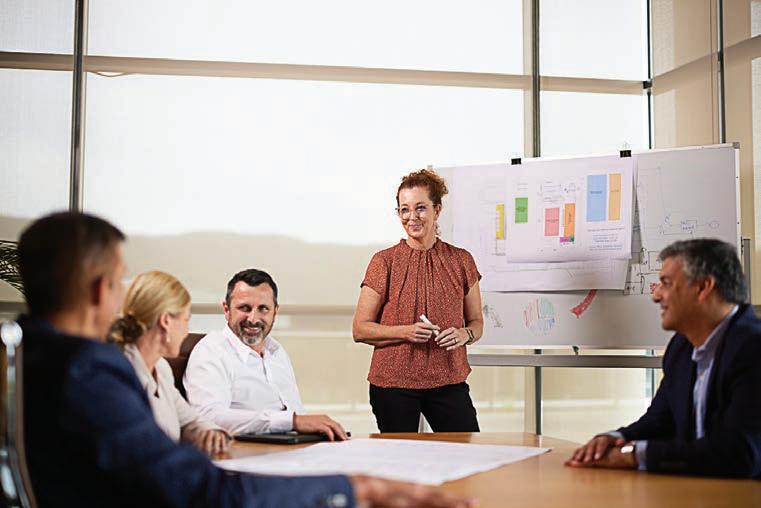
own their ability to drive value,”
Peter says. “The pandemic showcased numerous examples of supply chain experts shaping internal narratives and earning C-suite roles themselves, which is a trend likely to continue.”
This convergence of supply chain resilience with corporate strategy futureproofs the business from the increase in disruptions. According to McKinsey research, supply chain shocks equate to 45 per cent of one year’s profits lost every decade without mitigation, highlighting how C-suite leadership helps prioritise and align logistics with operational and financial objectives.
Recent Accenture research found 43 per cent of supply chain executives cite lack of strategic alignment as the reason they can’t unlock more enterprise value. The C-suite partnership overcomes this barrier while tackling other roadblocks like inadequate skills (48 per cent), legacy IT systems (44 per cent), and securing resources to build resilient operations.
SHORING UP SUPPLIER PIPELINES
“Businesses will be well served by holding discussions with primary suppliers to understand the robustness of their supply chain end-to-end,”
For C-suites, it’s either put supply chain front-of-mind, or be left behind. Image: Prological.
Peter advises. “They should conduct audits, secure backup suppliers and invest in technology for full transparency.”
As supply chains grow increasingly complex with geographically dispersed, multi-tiered supplier networks, Peter stresses the need for C-suite oversight and comprehensive risk mitigation.
Too often, businesses solely hold Tier 1 vendors accountable without grasping potential chokepoints from secondary and tertiary providers.
“If a primary supplier relies on a single source that fails, they won’t be able to meet demands,” Peter explains. “Companies must deeply evaluate their supply chain’s end-to-end resilience, auditing and securing backup suppliers across all tiers, even if costlier initially.”
From global crisis to existential threat, a perfect storm of compounding pressures has ushered supply chain strategy into a new era of criticality for the C-suite. Enterprises prioritising logistics resilience, agility and digital visibility will be equipped to surmount even the most turbulent conditions. Those failing to adapt will be left treading water, always reacting, never fully recovering, says Peter.
“The awakening has sounded - boardrooms can no longer ignore supply chain mastery as a non-negotiable imperative for lasting success.” ■

MHD COVER STORY MHD MAY 2024 | 31
The convergence of supply chain resilience with corporate strategy futureproofs businesses from increasing disruptions. Image: Prological.

Coates acquired its first Hangcha unit in 2022. Image: Coates
STRATEGIC SYNERGY
In a world where efficiency, sustainability, and strategic foresight are paramount, the partnership between Coates, Australia’s leading equipment hire and solutions provider, and Hangcha, a forklift manufacturing powerhouse, demonstrates how like-minded collaborators benefit industry. MHD explores the strategic, customercentric, and sustainability-driven facets that drive innovation and mutual growth.
The inception of the CoatesHangcha partnership was not a decision taken lightly. It was the culmination of an extensive period of due diligence, involving technical reviews, demonstrations, and customer trials, leading to the acquisition of the first Hangcha unit in 2022. “Coates and Hangcha are steadily building a strong strategic relationship in the Materials Handling sector,” says Dan Goodfellow, Group Manager - Products & Fleet Trading at Coates.
Faced with the global supply chain challenges of 2020, Coates began exploring options among various Chinese OEMs, with Hangcha standing out for its shorter lead times and competitive pricing. This exploration was not merely about overcoming immediate challenges but was geared towards fostering a long-term strategic relationship. Dan highlights, “After undertaking extensive research and
conducting a number of demos, we bought our first units in 2021/22.” The adoption of Hangcha’s rough terrain forklifts and the consideration for expanding the product range within Coates’s fleet underscore a commitment to excellence and innovation.
SUSTAINABLE SYNERGY
The strategic alliance between Coates and Hangcha is underpinned by a shared commitment to sustainability and operational efficiency. The Hangcha products deployed by Coates, including the new “High Voltage” Lithium Rough Terrain forklifts, align with Coates’s “Greener Choices” range. This range encompasses battery electric, hybrid, and solar equipment, along with low pollutant Stage V engines, offering customers sustainable solutions for their projects. “The majority of our investment in Hangcha has been in our ‘Greener Choices’ range,”
Dan emphasises, showcasing the partnership’s role in supporting industry towards a greener future.
AMPLIFYING CUSTOMER VALUE
The business models of Coates and Hangcha, though distinct, complement each other in a manner that amplifies value for customers. Coates’s position as Australia’s largest equipment hire and solutions provider, combined with Hangcha’s stature as a globally recognised materials handling manufacturer, creates a formidable force in the industry.
This collaboration is not just about providing equipment; it’s about delivering comprehensive solutions that support customers’ net-zero commitments and operational needs. Dan reflects on the mutual understanding and shared goals that have been instrumental in providing
32 | MHD MAY 2024 MHD MATERIALS HANDLING
effective product solutions: “Hangcha’s focus on more sustainable electric equipment supports this. Hangcha also have efficient delivery times with equipment which assists with our fleet replacement strategy and enables us to match our fleet investment requirements with customer demand.”
EXCEEDING CUSTOMER DEMANDS
The partnership supports Coates in meeting the diverse demands of its customers, from large corporations to local tradespeople, across Australia’s vast landscapes. With $1.95 billion in available assets across numerous product categories, Coates provides its customers with end-to-end solutions across equipment hire, power and HVAC, temporary works engineering, and industrial shutdowns and maintenance. The national footprint of more than 145 branches enables the delivery of materials handling solutions that are efficient and safe for operators, irrespective of the project’s scale or location.
“Our customers require materials handling to safely move, place, replenish or just reduce manual handling on the site, from our top-tier customers like BHP or Downer, all the way through to the tradie improving a school for our kids,” says Dan.
“Australia is also a vast country, with remote sites and massive distances to travel which means warehouses and distribution centres are common across the country. With more than 145 branches across the country, we have the national footprint to offer materials handling like forklifts, telehandlers, pallet jacks or walkie stackers to make these sites efficient and safe for the operators.
“With so many sites to service, it’s important to have reliable partners like Hangcha on board.”
ELEVATING BRAND REPUTATION
At the heart of this partnership lies a shared emphasis on elevating brand reputation through diligence, quality, and innovation.
Coates’s rigorous supplier due diligence process and Hangcha’s commitment to product quality and improvement reflect a mutual dedication to excellence. “Whether we’re purchasing equipment from the US, Europe, or China, all suppliers must pass our compliance and fitfor-purpose test,” Dan remarks, underscoring the importance of reliability and maintenance in enhancing brand reputation.
CHARTING A PATH FORWARD
The strategic partnership between Coates and Hangcha is more than a response to immediate market needs; it’s a forward-looking collaboration that helps set a higher benchmark for industry. Through a shared vision for sustainability, a commitment to meeting diverse customer needs, and a dedication to elevating brand reputation, Coates and Hangcha are not merely navigating the present— they are shaping the future of the materials handling sector.
The Coates-Hangcha partnership illustrates the power of strategic collaboration in meeting and exceeding industry standards. By combining Coates’s extensive network and customer-centric solutions with Hangcha’s manufacturing excellence and innovation, this alliance not only addresses current challenges but also paves the way for a more sustainable and efficient future. In fact, this forward-thinking approach is baked in from the outset, as Dan explains:
“Before forming a strategic partnership with a supplier we will often spend time at their factory or with their R&D team to ensure they have the capability and resources to continue to improve the product. We are in the process of doing this with Hangcha and it’s been very productive. Rental equipment needs to be robust, so how a supplier responds to issues, breakdowns and feedback is important to us so we can continue to deliver high-quality equipment and excellent customer service for our customers.” ■
The Coates-Hangcha partnership is in part based on a shared commitment to increased sustainability of forklifts.

MHD MAY 2024 | 33 MHD MATERIALS HANDLING
Image: Hangcha.
Order picking is the grouping of specific partial quantities (articles) from available warehouse stock (inventory) on the basis of orders. Image: Jungheinrich.

IMPROVING OPERATIONS WITH ORDER PICKING
MHD sat down with Jungheinrich’s Product Manager, Robert Skalba, to discuss how lowlevel order picking processes and assistance systems improve warehousing operations.
At first glance, the low-level order picking process seems easy to manage. It’s simply collecting items from the warehouse and stacking them onto pallets.
Jungheinrich says efficiencies can be increased through many ways. Picking errors can be minimised, driving path lengths reduced, and the warehouse layout and goods and equipment setups can be optimised.
All these areas need to be deeply investigated to get the best results. Even if cutting-edge technology is implemented, when the warehouse layout doesn’t fit to the current process needs, it isn’t effective.
IMPROVING PROCESSES WITH ASSISTANCE SYSTEMS
Low-level order picking (LLOP) works like a mechanical device. It may function if some parts are low quality or sometimes even missing. But if a warehouse manager wants it to work like a Swiss watch, they’ll have to pay
attention to the details.
“I’ve met many customers and I’ve found that they think everything’s perfect, but after investigating, we notice we can improve their applications,” says Robert Skalba, Product Manager, Jungheinrich. “But each customer wants to increase the picks per hour, and it can be done in many different ways. We can also use some additional systems.”
Based on VDI (Association of German Engineers) guidelines, “order picking is the grouping of specific partial quantities (articles) from available warehouse stock (inventory) on the basis of orders.”
The operator drives around the warehouse and collects goods according to the customer’s orders. For instance, short distances between picking spots allow the operator to use semiautomatic solutions and reduce total picking time.
On the other hand, if too many fastrotating goods are stored in the same
area, there’s risk of a traffic jam. There’s no simple answer or universal solution for all applications.
Assistance systems are all technical solutions, which help prevent operators making mistakes, increase productivity or help them work comfortably. One of the leading solutions is pick-by-voice. The operator receives commands via headphones as to what to collect and confirms it by speaking into their earphone set.
Pick-by-weight is a similar system to the one which is used in supermarket self-checkouts. The system checks the weight of each collected item and compares it with the weight in the Warehouse Management System (WMS).
Another one is pick-to-light, which highlights the pallet where the current picking item should be placed. It all depends on the customer specific requirements as to which one is the best for the application.

34 | MHD MAY 2024 MHD WAREHOUSING

RAISING PLATFORMS AND AUTOMATING OPERATIONS WITH WMS
Jungheinrich knows the right truck and configurations are crucial to ensure effective processes. It starts with finding the correct model – depending on what the level order picking process is. If it’s just Level 0, standard LLOP usually will suffice.
If the picking process is going further up, it’s necessary to change the model to the one with a lifting platform or step in the operator’s area.
“Width across the forks have to be picked depending on the operated loads,” explains Robert.
“Sometimes additional forks accessories may be useful, e.g., stops on fork tips, or dedicated locking brackets.
“A fork’s length may vary depending on the loads, but also the warehouse layout. Backrests, seats, accessories, special equipment – all these components should be taken into consideration when choosing the right truck for the application.
can push the button to make it extend about one metre vertically. It all depends on the location of the loads in the warehouse layout.
“If we are talking about different solutions, you usually think about automation. It’s present in the order picking, but it’s like semi-automation,” notes Robert.
“We are talking about three solutions. The first one is the basic one. The operator can drive the truck a certain distance. It can be adjusted according to the customer’s requirements.
“The more advanced one, and I think the most popular one is the one where the truck follows the operator.”
Jungheinrich acknowldeges of the primary challenges in LLOP revolves around picking errors, which stand as a significant hurdle for companies striving to meet customer demands efficiently.
Selecting the right equipment for the job is crucial in optimising LLOP operations. Factors such as fork length, the suitability of standard versus elevating platforms, and the integration
essential tools and technologies all play a role in determining efficiency.
In pursuit of increased automation and efficiency, Jungheinrich understands businesses are exploring semi-automatic solutions, including remote steering, follow-me systems, and truck-WMS integration. These innovations promise to revolutionise LLOP.
“Operators can focus on their main job and in the case when the next load is too far away to go by foot, the WMS can send the information to the truck, so it knows where to drive,” says Robert.
“They can confirm they’ve picked up the goods by lodging the information into the terminal.
“Depending on the solutions and customer applications, they can expect productivity increases of up to 30 per cent. Here at Jungheinrich, we can help you optimise your warehousing operations by providing our LLOP services and advise you as to what solutions will suit your facilities. Feel free to find out more by contacting

Find out more: www.enersys.com/en-gb/throughput © 2024 EnerSys. All rights reserved. Trademarks and logos are the property of EnerSys and its affiliates unless otherwise noted. Subject to revisions without prior notice. E.&O.E. *As reported on www.talkinglogistics.com
of customers penalise suppliers for missed deliveries. If your equipment power fails, you jeopardise today’s deliveries and tomorrow’s business. Are you at risk? When it comes to power, EnerSys® can help you choose wisely. * Today it’s a missed delivery. Tomorrow it’ll be my job. MHD MAY 2024 | 35 MHD WAREHOUSING
50%
WHY ADAPTABLE SOFTWARE IS CRUCIAL
Körber’s Darren O’Connor explains why adaptable software is a must in the modern supply chain.

ISlotting.IQ helps organisations better utilise their space and reduce replenishment efforts.
Image: Körber
n today’s fast-paced world of supply chain management, following the crowd can be a recipe for mediocrity. A fit-forpurpose solution today may need to change in six months, while a legacy management system a business has relied on for years may not be delivering the same results. The current logistics and supply chain landscape calls for solutions which can cope with chaos, which is why flexibility and adaptability are core tenets of modern software for growing businesses.
At the enterprise WMS level, Körber’s software can be adapted to
fully support what an organisation really wants. Working with all sizes of business, this unique position in the market means that Körber attracts a certain profile of customer – organisations that want adaptable software, rather than an out-of-thebox solution. To continue to improve its software’s flexibility, Körber has introduced a new solution to run alongside its WMS: Slotting.IQ.
KEEPING UP WITH MODERN INVENTORIES
Supply chains are becoming more and more complex, exemplified by warehouse inventories that continually
vary depending on seasons, consumer preferences and product availability. More diverse customer preferences drive continuing stock keeping unit (SKU) proliferation, heaping the pressure on organisations to improve warehouse efficiency. High prices and low vacancy rates for industrial property have placed an onus on maximising warehouse floor space, making the targeted assignment of storage slots – placing inventory in its optimal position inside a warehouse –fundamental to a well-run distribution centre. Large, fast turning and seasonally changing inventories have exposed the limitations of manually
36 | MHD MAY 2024 MHD SUPPLY CHAIN
handling items, while traditional rule-based slotting tools are also insufficient for today’s demands.
Körber’s Slotting.IQ was developed to bridge this gap, giving warehouse managers a slotting solution that can handle large, complex, frequently changing product assortments.
Built to integrate seamlessly with Korber’s industry-leading Warehouse Management System (WMS) – which was recently named a Customers’ Choice in the 2023 Gartner Peer Insights ‘Voice of the Customer’: WMS report – Slotting.IQ optimises inventory placements to increase order picking efficiency. The technology harnesses an array of customer data, including item master transformation, warehouse layouts and historical pick paths. By employing advanced data science methodologies and projected future demand, it determines the optimal storage locations for every SKU. This strategic slotting maximises pick density, reduces travel time and accounts for product velocity, slot characteristics and customer-defined rules.
GAINING A COMPETITIVE ADVANTAGE
The benefits of a modern slotting solution are substantial. Initial customer results have shown efficiency gains of 5 per cent to 30 per cent for picking and replenishment processes, translating into significant labour cost savings. Slotting.IQ helps organisations better utilise their space and reduce replenishment efforts. It also helps improve order accuracy, workplace safety and reduce instances of item damage.
Flexibility and configurability are the key pillars of Slotting.IQ. Unlike traditional slotting tools with rigid, predefined rules, this new solution enables customers to provide extensive data inputs and define their own parameters. The tailored approach ensures that slotting recommendations align with each organisation’s unique processes, priorities and goals.
Slotting strategies vary depending on the business, so a solution which can adapt to minimising picking distance or reducing replenishments can be a major advantage. By simulating and comparing the impact of different approaches, organisations can make

“High prices and low vacancy rates for industrial property have placed an onus on maximising warehouse floor space, making the targeted assignment of storage slots –placing inventory in its optimal position inside a warehouse –fundamental to a well-run distribution centre.
”Flexibility and configurability are the key pillars of Slotting.IQ. Image: Körber
informed, data-driven decisions while being able to adapt and add slotting of new products or product lines.
Embracing a new, higher level of adaptability in our supply chains enables businesses to respond to a wide breadth of customer demands, increasing customer satisfaction.
Körber’s recent Supply Chain Benchmarking survey demonstrated that 90 per cent of consumers are less likely to buy from a brand again after a poor online shopping experience, showing second chances are hard to come by.
To thrive in today’s business landscape, solutions like Slotting.IQ are helping forward-thinking companies rise to the challenge. While techenabled supply chains are becoming the norm, we still need to think creatively to solve unique problems. No business is the same, nor is any one supply chain, so the technology behind them needs to reflect this individuality. ■
Darren O’Connor, Director of Solution Delivery at Körber Supply Chain
MHD MAY 2024 | 37
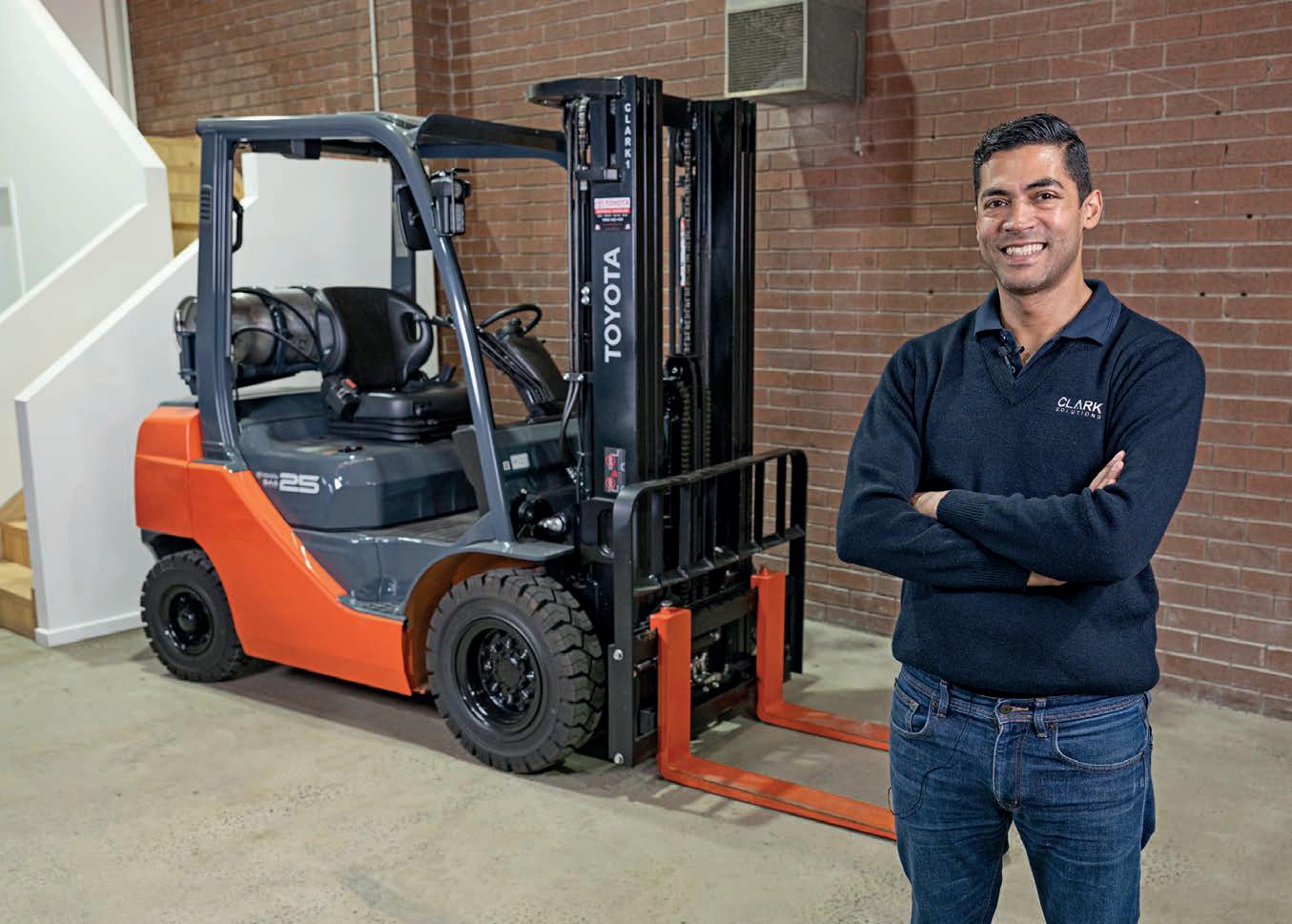
CLARKSOLUTIONS USES TMH A TO EXPAND BUSINESS
Melbourne-based commercial and industrial cleaning business ClarkSolutions has enlisted the strong and reliable performance of Toyota Material Handling Australia (TMHA) as it expands its business to include a small warehouse.
ClarkSolutions offers a wide range of services for businesses including after-hours office, warehouse, building, window and event cleaning as well as the recent production and sale of chemicals which has necessitated the acquisition of a warehouse to store the chemicals.
With the recent production and sale of chemicals, ClarkSolutions Director Peter Clark required a forklift for the first time, resulting in the purchase of a Toyota 32-8FG25 forklift.
“ClarkSolutions has recently
upscaled our business and have gone into manufacturing cleaning chemicals, and we required a forklift for receiving pallets of cleaning chemicals off trucks,” Peter says.
“They’re 200-litre drums of cleaning chemicals and there’s four drums on each pallet, so that’s 800 litres so we definitely needed a forklift.”
When beginning the process of choosing a new forklift for his warehouse, Peter consulted friends with experience in selling forklifts,
which led him to contact TMHA for a quote.
Peter ended up speaking to TMHA area sales manager Justin Eagleton, who helped Peter navigate the sale process and find a forklift that suited his needs.
Peter says that one of the main reasons he chose the Toyota forklift was the sharp pricing that Justin was able to procure, finding Peter a demonstrator model that resulted in significant savings.
With only 70 hours of use
38 | MHD MAY 2024 MHD MATERIALS HANDLING
ClarkSolutions Director Peter Clark. Image: TMHA.
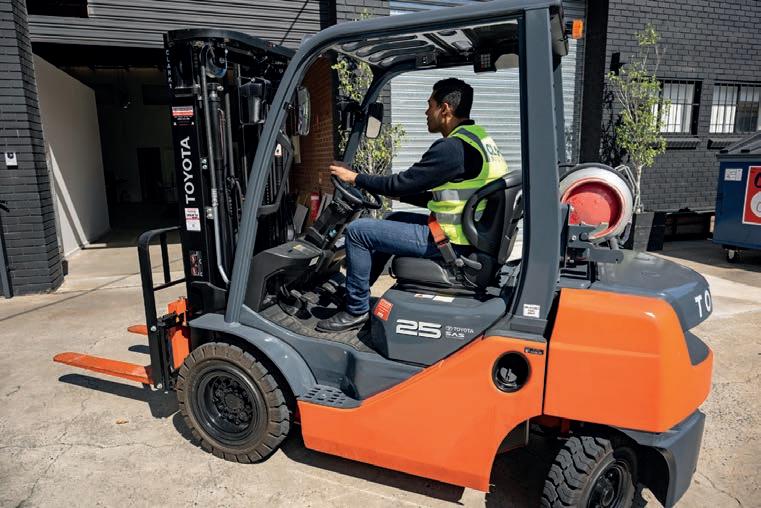
on the demonstrator forklift, a comprehensive-warranty was also included as part of the purchase to provide Peter with additional peace of mind.
The service and follow-up provided by Justin has also been one of Peter’s favourite aspects of his new purchase.
“Justin was a lot of help, I was very happy with Justin,” Peter said. “Just the support and the information with
he was very friendly; he gave me all the information I required to have an understanding of what I’m purchasing and he always came back to me to let me know what was available.”
Furthermore, the demonstrator model Peter purchased came equipped with extra optional features which further improved the value proposition of the purchase, such as a telematics system which can provide information
a business’ material handling needs.
Toyota forklifts are renowned for their extensive safety features, which have so far impressed Peter.
“It’s easy to use, it’s very straightforward and what I like about it is it’s got a lot of safety features –For example, it doesn’t work without [being seated and with] the seatbelt on which is really good,” he said.
Peter’s 32-8FG25 forklift uses a dual-fuel system running LPG and gasoline, providing longer running times and greater fuel efficiency than a petrol-only forklift with the performance and reliability that customers come to expect from TMHA.
It also features Toyota’s exclusive System of Active Stability (SAS) forklift stability system, which helps maximise safe operation of the machine with a sophisticated and technologically advanced system to help detect and prevent unsafe operation.
ClarkSolutions employs over 40 people in Melbourne and provides a range of high-level cleaning services for commercial and industrial businesses large and small. ■
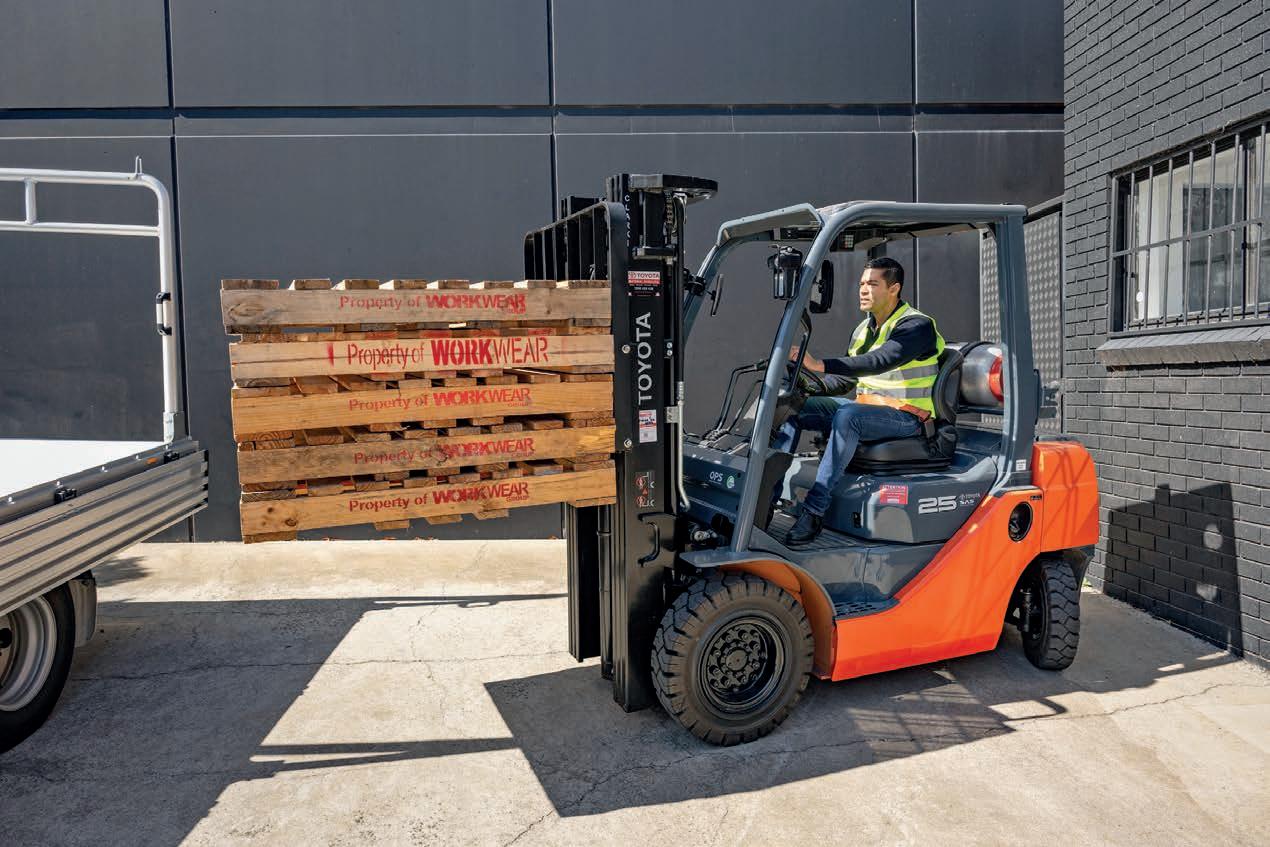
MHD MATERIALS HANDLING
TMHA’s clear communication and tireless work to find the right forklift was of immense help, Peter says. Image: TMHA.
Peter’s 32-8FG25 forklift uses a dual-fuel system running LPG and gasoline, providing greater fuel efficiency than petrol-only. Image: TMHA.
REVOLUTIONISING LOGISTICS WITH S4T
Alex Koumaras of Leopard Systems discusses the transformative impact of the Scan4Transport (S4T) standard. As a leader in enterprise mobility solutions, Alex offers an inside look at the benefits and implementation of the standard.
In logistics and transport, technological advancements play a pivotal role in enhancing operational efficiency and data accuracy. One such innovation is the Scan4Transport (S4T) standard developed by GS1 Australia, which Leopard Systems has integrated into their solutions. Alex Koumaras, Managing Director of Leopard Systems, a certified S4T label and solution partner of GS1 Australia, shares insights into the impact and advantages of S4T from their perspective.
Leopard Systems, a long-standing provider of enterprise mobility solutions, has been at the forefront of implementing mobile scanning hardware since 1990. “Our journey began with basic barcode scanning, but over the years, it has evolved into comprehensive solution design for top-tier logistics organisations,” Alex explains. This evolution reflects a shift from simple data capture to sophisticated, cloud-based systems that reduce the need for heavy IT investments.
Discussing the unique position of Leopard Systems in the market, Alex highlights their holistic approach. “We’re not just a supplier; we are a one-stop shop for hardware, software, and services, which sets us apart from our competitors,” he states. This integrated approach allows Leopard Systems to cater to diverse needs without requiring clients to seek multiple vendors. The introduction of S4T addresses several challenges previously faced in the logistics sector. Alex points out the disparity in technological capabilities across the industry, from large postal organisations to smaller transport companies.
“Before S4T, the variance in IT capabilities meant that not everyone could achieve high data accuracy or system integration,” he notes. This standard provides a unified method for data communication, significantly reducing complexity and enhancing interoperability.
Implementation of S4T by Leopard Systems was strategic and considered, aligning with their role in the industry working group that developed the standard. “Our involvement in creating the S4T standard underscores our commitment to improving the industry at large, not just our own customers,” Alex says. The support from GS1 during this process was crucial, providing the necessary resources and guidance to ensure smooth integration.
Alex elaborates on the practicality of implementing S4T, emphasising its scalability and cost-efficiency.
“Whether it’s a large company or a small transporter, implementing S4T is manageable and not costprohibitive. Smaller companies can be nimble, implementing changes quickly without substantial investments,” he explains. This flexibility is vital in an industry where the range of business sizes and capabilities is vast.
Further detailing the implementation process, Alex says Leopard Systems was proactive in integrating S4T into their new platform. “When S4T was announced, we were already developing a new platform. It made perfect sense to incorporate S4T from the start rather than retrofitting it later,” he mentions. This forward-thinking approach not only streamlined the integration process but also ensured
that their clients would benefit from the latest advancements in logistics technology.
The benefits of adopting S4T extend beyond simplifying data exchange. “With S4T, companies can immediately understand vast amounts of logistic details through a single barcode scan, which revolutionises how we manage and track shipments,” Alex says. This efficiency is critical in a sector where timely and accurate information can dictate the success of logistics operations.
Moreover, the scalability of S4T
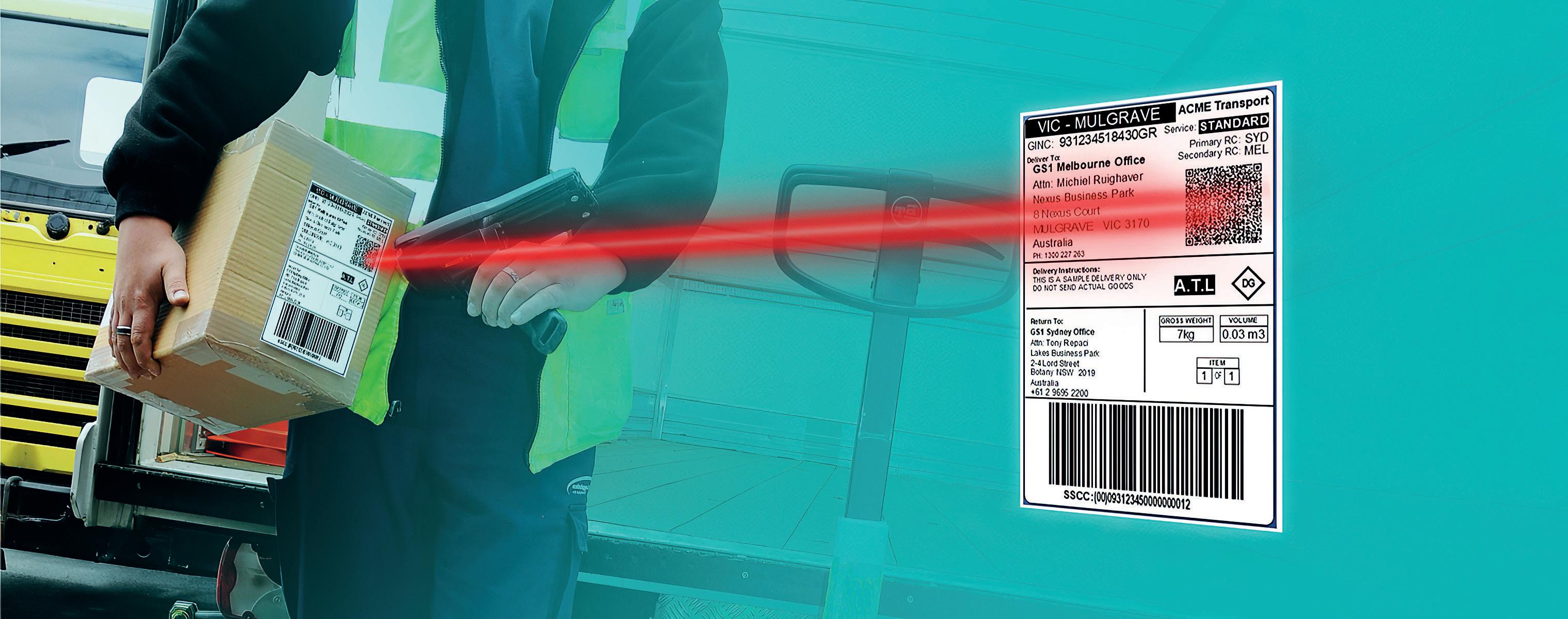
40 | MHD MAY 2024 MHD SUPPLY CHAIN
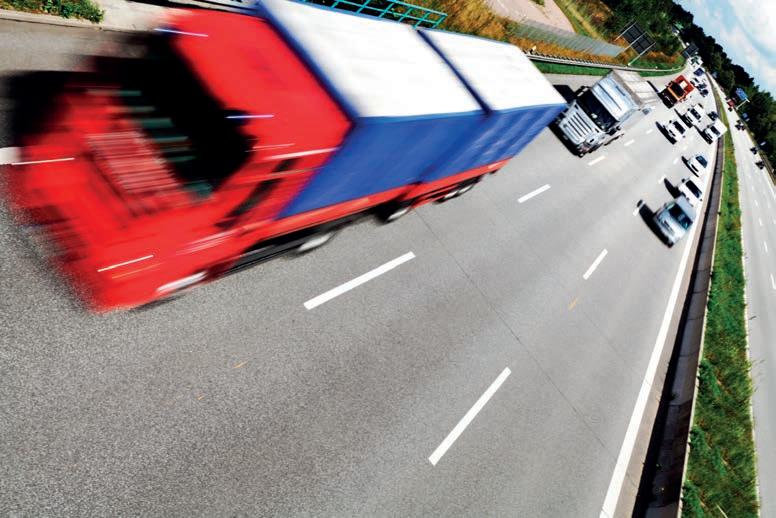
means that it is accessible to a broad range of companies. “From small businesses to large corporations, the implementation of S4T is scalable and not cost-prohibitive,” Alex explains. This inclusivity ensures that more organisations can adopt
this technology without significant financial burden, democratising access to advanced logistics tools. Reflecting on the future of logistics, Alex is optimistic about the continued relevance and benefits of S4T. “By adhering to this standard, we ensure
a consistent and reliable framework for data exchange across the industry, which eliminates the need for constant redevelopment and allows companies to focus on growth and innovation.”
As Leopard Systems continues to lead in the integration of S4T, Alex’s vision is clear. He encourages other industry players to adopt this standard, stressing the long-term benefits of streamlined operations and enhanced data transparency. “Embracing S4T is not just about keeping up with technology—it’s about setting a foundation for future advancements in logistics,” Alex concludes.
Through thoughtful implementation and strategic use of S4T, Leopard Systems exemplifies how embracing industry standards can lead to significant improvements in operational efficiency and customer satisfaction. Their journey with S4T not only demonstrates the potential of this technology but also sets a benchmark for others in the industry to follow. ■

MHD MAY 2024 | 41 MHD SUPPLY CHAIN
Alex encourages other industry players to adopt the S4T standard, stressing the long term benefits of streamlined operations and enhanced data transparency across industry. Image: GS1.
The scalability of S4T means it is accessible to a broad range of companies. Image: GS1.
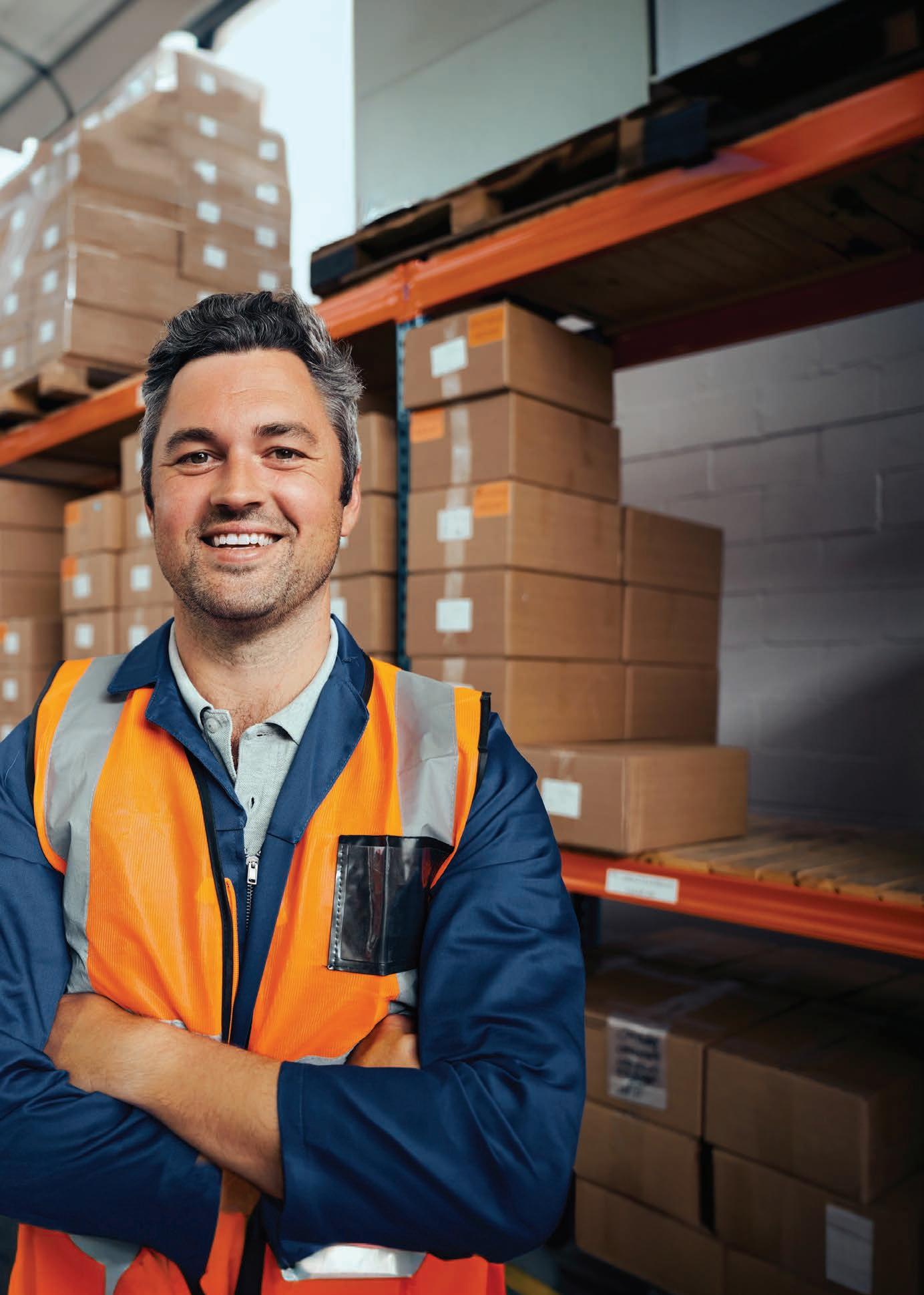

18 SEPT 2024 Melbourne mercuryawards.com.au Celebrating innovation across the freight and logistics supply chain Showcase your business by sponsoring the Mercury Awards HELD IN CONJUCTION WITH SPONSORSHIPS NOW AVAILABLE

REUSING WRAPS FOR MOVING PALLETS
MHD sat down with co-founder of Bearhug Pallet Wraps, Tom Field, who spoke about the New South Wales-based start-up, and what it can offer businesses looking for sustainable and cost-effective pallet wraps, which it will showcase at MEGATRANS2024.
This September, Australia’s largest logistics event, MEGATRANS, is returning to Melbourne, bringing together industry experts to explore the many ways the supply chain can be made more robust and sustainable.
In a rapidly evolving logistics and supply chain world, MEGATRANS is rebranding itself to reflect the industry’s shift towards sustainability. Held every two years, MEGATRANS has built a formidable reputation as the leading supply chain and logistics event and will run across 18-19 September 2024.
of many companies featuring its solutions at the two-day-long event. The Australian enterprise was born from the frustration of a truck driver wasting a kilo of plastic each day.
The question that founder Tom had was: “I come back to the warehouse every day, my truck comes back every day, my pallets come back every day, why can’t my wrap?”
Working alongside Motus Transport, New South Wales’s (NSW) largest dedicated craft beer transport company, and some passionate breweries, Bearhug developed the strategies needed for their successful implementation internally, and the
systems needed for their application throughout supply chains.
The NSW-based business founded by Tom Field and Max Higgin was launched in January 2023.
MOVING WITH REUSABLE WRAPS
Bearhug’s mission is to make reusable alternatives to single-use plastic viable for every step of a business’s supply chain.
A single reusable pallet wrap eliminates 350kg of plastic, reducing businesses’ wrap expense by $1350 over its life. It’s a cheaper, more sustainable alternative to plastic wrap.

Reusable pallet wraps are only applicable for seven per cent of global pallet movement. Image:
MHD MAY 2024 | 43 MHD MEGATRANS
Bearhug.
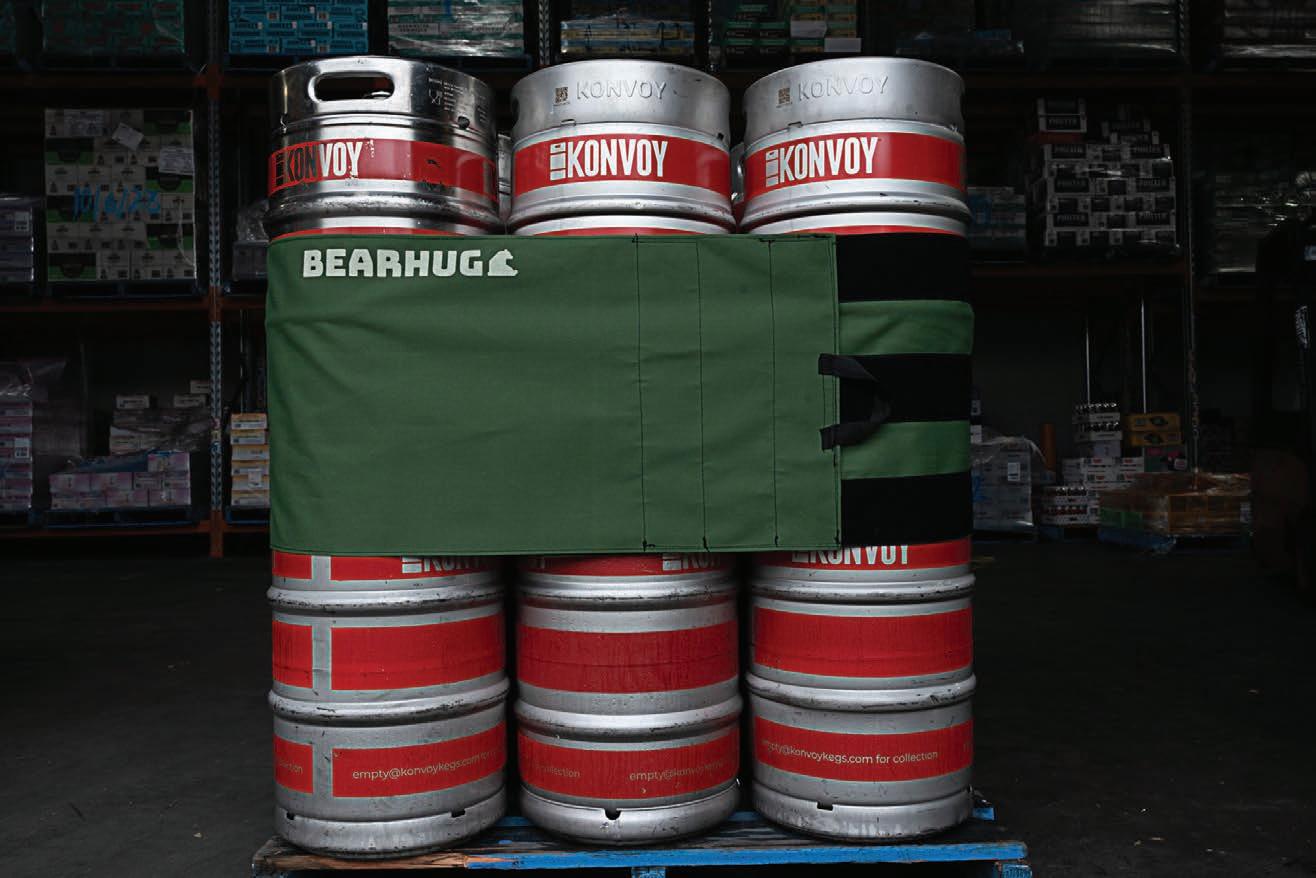
“The premise of any reusable asset is that you can break down the cost you buy it for over the number of uses,” explains Tom.
“With these reusable wraps lasting 1000 uses costing $150 each – that’s 15 cents per pallet wrapped. The amount of plastic that’s normally used per pallet wrapped costs about $1.50.”
That means with reusable wraps you’d breakeven in four months of daily use with an asset that can last well over four years.
They’re often used for pick and pack operations or moving pallets between warehouses, especially from production to storage.
Users can also hand unload units of stock across multiple delivery destinations and return the wrap at the end of the day.
For regular delivery routes, some recipients are willing to set wraps aside for collection or return. Even with most interstate returns, Bearhug’s wraps result in lower
Bearhug’s pooling model provides a common platform for moving wraps between parties without the concern of repair or return. Image: Bearhug.
emissions than plastic.
Its breathable mesh prevents mould, spoilage and packaging damage caused by trapped heat, moisture or off-gassing. The base straps solve the number one cause of pallet breakage – stretch film being improperly affixed to the pallet.
A Bearhug wrap takes one person a minute and 30 seconds to apply with seven points of application. Bearhug are also developing automated systems for applying reusable wraps.
USING THE POOLING MODEL
When purchased outright, reusable pallet wraps are only applicable for seven per cent of global pallet movement.
With a lack of other functional solutions, Bearhug’s pooling system is the best way to solve the plastic problem at scale.
Businesses can make the switch across larger segments of their operations whilst maintaining flexibility and reducing risk by
Bearhug offers the world’s first pooling model for reusable pallet wraps, allowing users to deliver waste-free pallets anywhere. Like with pallets, it provides a common platform for moving wraps between parties without the concern of repair
Bearhug products can be reused, repaired, returned, or recycled in
No packaging is used in their domestic deliveries, they use irreparable wraps for spare parts or R&D, and always look to deliver or collect wraps on their transport partner’s existing delivery routes.
“We’ve already saved 2.8 tonnes of soft plastic,” says Tom. “I guess the more we push out in the market, the
“Our goal is to bridge the gap in supply chains and the movement of wraps between parties by launching the pooling model, hopefully expanding the amount of use cases
“In terms of set up, something being reusable and built to last a long time, is inherently more durable. The wraps are made of polyester coated with PVC. We did some tilt tests with the Australian compliance lab at the end of last year, which showed them to outperform 88m of 11um stretch wrap (~600g of plastic).”
Greenhouse gas emissions (GHG) are often the focus of transport –especially when you’re talking about supply chains.
“The amount of greenhouse gas that goes into producing enough stretch wrap to cover those 1000 uses is one tonne greater than the emissions consumed by a reusable wrap,” notes Tom. “Our life cycle analysis also factors in return emissions.”
Bearhug’s focus until now has been on getting wraps in businesses’ hands for their internal use.
Now that Bearhug has a bunch of happy customers and know all the best practices around implementation, its goal is to get as many distributors accepting inbound wraps and manufacturers sending reusable-wrapped pallets to them as possible. ■
44 | MHD MAY 2024 MHD MEGATRANS

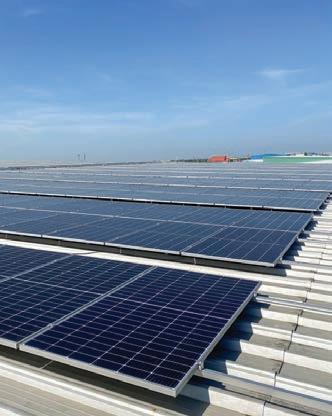


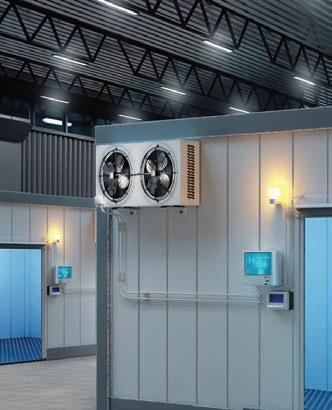
MEGATRANS is Australia’s largest integrated conference and exhibition dedicated to the logistics industry. MEGATRANS is an interactive expo, reserved for companies offering advanced technology technologies and services, grouped by their contributions to the sustainable supply chain. IN CONJUNCTION WITH ASSOCIATION PARTNERS PROUD SPONSOR FLEETS OF THE FUTURE THE ZERO CARBON WAREHOUSE COLD CHAIN SOLUTIONS THE TRACEABLE SUPPLY CHAIN Will you be a part of the supply chain of the future? BOOK YOUR STAND TODAY megatrans.com.au Melbourne Convention and Exhibition Centre 18-19 SEPTEMBER 2024 Don't miss out, secure a prime position
HORIZONTAL VS. VERTICAL?
EnerSys on six key factors to consider when expanding capacity
Warehouses and distribution centres need to stay agile and offer a wide variety of products to keep up with changing customer demands. In the 2022 Annual Warehouse and Distribution Center Equipment Survey conducted by Modern Materials Handling magazine, 42 per cent of standalone warehouses/ DCs expected to increase activity and capacity in the following two years. However, the growing number of SKUs is taking up more physical storage space than the current layouts can handle.
Aside from a physical building expansion, which may not be feasible in many cases, traditional solutions to expand capacity are to either free-up floor space by changing the horizontal arrangement of the current facility or adding more levels to current racking to grow storage vertically. There are pros and cons to each option, so before making a decision, it’s important to carefully consider many aspects of both current and future operational needs. Here are six things to consider when deciding whether to expand warehouse capacity vertically or horizontally.
#1: FACILITY HEIGHT AND INFRASTRUCTURE
While there may be infrastructure changes to accommodate a horizontal rearrangement of the facility, such as utilities and fixed areas (shipping & receiving, restrooms, etc.) there are other areas that may be evaluated for resizing or elimination (office areas, battery rooms, etc.) to reclaim needed space for capacity. For vertical expansion, the ceiling height of your facility isn’t the only factor to consider if additional racking can be added safely.
Overhead infrastructure such as lighting, electrical, fire suppression, and HVAC systems may also need to be altered or rerouted. Do these obstruct
the use of higher racking, can they be moved and what are the cost and safety compliance implications of the relocation? In addition to looking up, one should also look down and check the flooring to ensure the weight capacity of the warehouse flooring is enough to handle the additional weight of the vertical racking and extra SKUs it will be holding.
#2: CURRENT RACKING TYPE AND AGE
Some types of racking, particularly older racking, may not be modular to accept additional racks stacked on top of it, so purchasing new racking could be necessary. The weight capacity of the lower sections should also be double-checked to ensure it is able to cope with the additional weight that will be placed on top of it. Sometimes, to increase higher weight capacity, column reinforcements may need to be installed or racking may need to be replaced with types that have higher weight capacity – adding more cost to a vertical option.
#3: FORKLIFT CAPABILITIES
While less of an issue in a horizontal reorganisation, assuming throughput levels can be achieved, vertical
expansion could involve investing in new forklifts – depending on the current reach height and weight capacity of your equipment. As part of your evaluation, it is smart to check these factors for your current forklift fleet to determine if they are sufficient or will need to be replaced. Forklifts with higher reach heights are often more costly than forklifts with lower height capacity as well and sometimes require retraining operators due to difference in equipment controls.
#4: EQUIPMENT POWER NEEDS
Even if your current forklift fleet will suffice in terms of reach height and weight capacity, your batteries and chargers should also be reviewed to ensure they are able to handle the additional workload. Forklifts require a little extra power in higher lift applications because the higher positions require more energy to lift and lower to accommodate. This often taxes traditional flooded lead acid batteries – shortening their productive period per shift. To make existing lead acid batteries suffice, they may need to be changed and charged more often. So more chargers and backup batteries, requiring more electrical infrastructure,

When expanding vertically, it’s important to consider the reach capabilities of your forklift fleet. Image: romaset / Adobe Stock.
46 | MHD MAY 2024 MHD WAREHOUSING

maintenance (watering and equalizing) and storage space will be necessary – countering the objective to free up space for more storage. Intermittently used forklifts are most likely not impacted because there is more time to charge between uses.
But for forklifts in consistent operation, new, higher capacity batteries such as lithium-ion or thin plate pure lead (TPPL) that are designed to stay in the equipment and charge during breaks may be needed to meet extra demand. If you’re not sure what type(s) of battery technology you need, then coupling a power study with an application simulation provides a clearer picture so you can make your decision based on data and not risky guesswork.
#5: THROUGHPUT REQUIREMENTS
For horizontal reorganisation, added pick times are highly dependent on how efficiently your facility is laidout, based on the most common material flow paths. But when adding vertical racking positions, pick rates decrease as position height increases as it’s a longer vertical distance for the forks (and load) to travel and operators need extra time to line up
the forks with pallet slots at higher racking levels.
Although a single high level pick may take only a few seconds longer, multiples of them can add up to hours over a week, or even a single shift based on the mix of SKU positions. In addition, higher picking forklifts draw extra power, so those with flooded lead-acid batteries may need to go offline more frequently to be charged or changed – also affecting throughput. This is a key reason that a quantitative, data-based approach is critical to making an informed choice on power.
#6: ANTICIPATED GROWTH IN THROUGHPUT DEMAND
Keep in mind, someone built your facility to accommodate a certain amount of throughput, but now you’re making adjustment because that amount has changed over the years. Thus when evaluating your plans, you should consider what the potential for change and growth is in the future. If future demand involves more inventory space and throughput needs, planning to accommodate that in terms of facility, equipment and even power should be part of your calculations.
INITIAL STEP: RETHINK YOUR BATTERY ROOM
A traditional battery room for leadacid battery storage and change-out creates non-revenue generating floor space that can account for hundreds to thousands of square feet. Consider upgrading your forklift power sources to advanced opportunity charge technologies such as TPPL and lithium-ion batteries. They eliminate the need for changing batteries and the battery room to accommodate spares like traditional lead acid batteries require. This enables you to free up that floor space for more storage. The initial cost of a lithium-ion or TPPL battery will be higher, but they have a lower total cost of ownership over the long term, especially when you consider the cost of the space your battery room occupies.
These factors are merely a guide when considering the best approach to expand storage capacity. A full evaluation will be significantly more involved. Contact EnerSys® to conduct a power study and EnSite™ simulation to identify the best power options for your operation now and in the future. ■
MHD MAY 2024 | 47 MHD WAREHOUSING
For horizontal reorganisation, added pick times are highly dependent on how efficiently your facility is laid out. Image: Ground Picture / Shutterstock.
SANTOVA LOGISTICS
Innovative Global Supply Chain Solutions
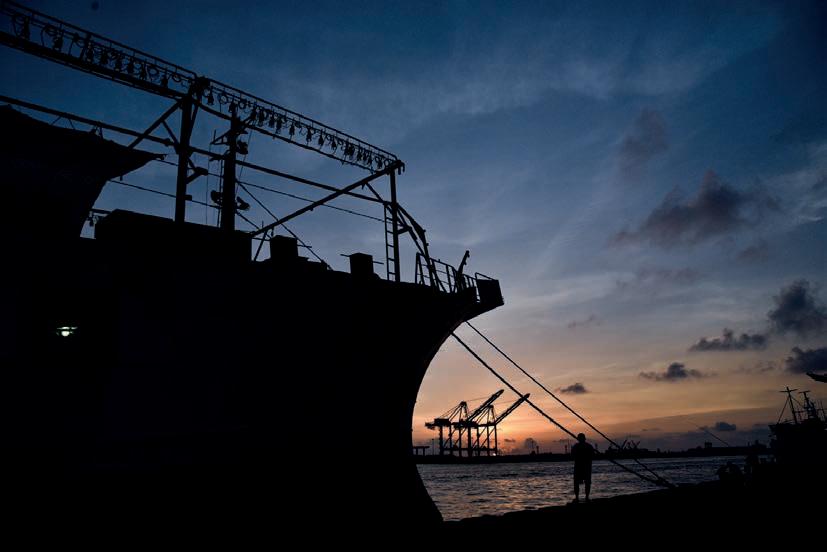

Driving Down Landed Cost
Client-centric services meeting time, budget and resource constraints
4PL SOLUTIONS
Comprehensive supply chain management solutions, including transportation, warehousing, distribution and last mile delivery.
OCEAN FREIGHT SERVICES
Reliable, agile and competitively priced FCL, LCL and consol services with varying routings and transit times.
AIR FREIGHT SERVICES
Partnering with global carriers to provide time sensitive and quality services globally.
MARINE INSURANCE SOLUTIONS
Comprehensive marine insurance solutions for complete peace of mind.
END-TO-END SUPPLY CHAIN VISIBILITY
SANTOVA LOGISTICS AUSTRALIA
Santova is an international, technology-based trade solutions specialist, delivering innovative end-to-end supply chain solutions. With offices across 11 countries, our team in Sydney and Melbourne provides unrivaled expertise and experience when managing the import and export of cargo globally.


Our constant innovation and technological development keep our customers ahead of the game. TradeNav, Santova’s inhouse shipment management system, enables visibility, transparency and accurate realtime tracking functionality required to proactively manage your supply chain.
santova.com | santova.com.au
SYD: +61 (0)2 8667 8777 | MEL: +61 (0)3 9863 6471 au.info@santova.com www.santova.com.au
OCEAN FREIGHT AIR FREIGHT 4PL SOLUTIONS MARINE INSURANCE
OFFICES COUNTRIES 21 11 CONTINENTS 5
CONTACT SANTOVA
FINDING THE RIGHT POWER SOURCE FOR YOUR FORKLIFT

Too often these days, buyers jump into materials handling equipment choices based on mistaken assumptions about current technology. Nowhere is this more evident than in the selection of energy sources – buyers are often blinded by the hype around ‘new’ solutions.
According to Greg Wood, Technical Solutions Manager at Linde Material Handling Australia, the choice of energy solution should not be taken lightly.
“We do not push one energy source over another. We study each individual application and offer the energy source that best fits the customer’s processes, targets and priorities,” he explains.
While manufacturers like Linde have a wide product offering, with machines powered by a range of sources from LPG to special battery types, it is important for end-users to select the option that is best for their specific application.
“When we’re approached about a new forklift, we ensure that the machine is fit for purpose,” Wood says.
“A crucial part of that is determining which energy source is the most suitable.”
During the consultation process, Linde tries to find out:
· Does the energy option fit the application?
· Is the infrastructure suitable?
· What are the environmental benefits?
· What are the cost implications?
“Before selecting a solution, together with the customer, we analyse the individual application with regard to energy infrastructure, potential power
limits or peaks, usage patterns and processes and, of course, return on investment,” he adds.
Wood believes the aim of equipment suppliers should always be to provide the perfect fit between the customer’s processes, the truck and the energy source.
ENERGY OPTIONS
Forklifts have come a long way, and not only has their capability been dramatically extended, so too have power sources. Many machines are still powered by traditional internal combustion engines, using petrol, diesel or LPG.
MHD MAY 2024 | 49 MHD MATERIALS HANDLING
Linde provides the perfect fit between customers’ processes, the truck, and the energy source. Image: Linde.
“The Linde Energy Analyzer uses the power data supplied from the customer’s energy provider to analyse and gain insights into the overall power drawn from the grid over time.

The most significant developments have occurred in the area of batteryelectric power, with machines powered by lead-acid batteries, and more recently Lithium-ION batteries and hydrogen fuel cells.
“With so much choice, it’s never been more important to tailor the energy solution to the customer’s needs,” Wood says. “This is more complex today because the barriers are shifting. Applications that previously could only be handled by ICE machines can now be tackled by high performance and efficient battery-powered machines.”
NEEDS ANALYSIS
Energy constitutes a significant component of equipment operating expenses, especially in the current environment of high fuel costs and rising electricity prices. Understandably, fleet managers are more conscious than ever of energy costs, prompting many to reconsider their options when refreshing or expanding their fleets.
“Together with the customer, we analyse the energy consumption of different devices and recommend only the suitable energy sources. If, for example, an electric-powered truck is the best option, then of course we find the right fit between the processes, the battery size, and the charging power,” Wood notes.
This process is aided by Linde’s extensive product range, which includes up to three different
battery capacities and at least two charger powers per voltage class, to accommodate a variety of applications. Those choices are guided by the end-user’s individual circumstances - infrastructure, processes, sustainability and return on investment.
According to Wood, Linde Material Handling has an array of helpful tools to identify appropriate energy sources for each customer.
The arsenal includes the Linde Energy Navigator, a detailed questionnaire which prompts discussions around customer targets, prioritisation, processes and applications.
The next tool, Linde Energy Calculator, simulates the daily operations of the customer and can identify the most appropriate energy source for any application.
The calculation considers the specific application and energy demand to compare different energy sources in terms of total operating cost, return on investment and CO2 emissions. For electric trucks, the most suitable battery and charger combination is determined by considering driving and break times, as well as calculating the entire fleet’s peak-power grid draw.
For those who don’t have typical daily operations and need a more practical analysis, we conduct a pragmatic assessment by simulating real-time material handling equipment activity. This involves considering actual truck driving
behaviour, utilisation and real break times. This information can then be used in conjunction with the Linde Energy Calculator to determine whether a customer’s application really offers adequate breaks for intermediate charging or to avoid selecting batteries or chargers which are bigger (and more expensive) than needed.
The Linde Energy Analyzer uses the power data supplied from the customer’s energy provider to analyse and gain insights into the overall power drawn from the grid over time. It can assess peak loading for applications with a high demand for charging power, or if the application is flexible, the analyzer can identify periods of low energy usage which are more suitable for charging.
These tools ensure that equipment owners understand the real costs of their materials handling operations and take the decision out of the realm of conjecture and into cold, hard economics.
“We’re not about selling equipment, but rather providing sustainable longterm operating efficiency tailored for each and every customer,” Wood stresses.
“You don’t always need the newest, biggest or best solution – you need the one that fits your operations, your requirements, your resources and your budget.” ■
To gain insight into your equipment needs, contact Linde today by calling 1300 454 633.

” 50 | MHD MAY 2024 MHD MATERIALS HANDLING
Linde has an array of tools for identifying the appropriate energy source for each unique customer. Image: Linde.

SKYWIRE & ZEBRA: BENCHMARKING EXCELLENCE
In the field of enterprise mobility solutions, Zebra products are setting the standard. Glenn Sheppard from consultancy Skywire explains why its rugged devices should be the benchmark for the industry, particularly when upgrading technology suites.
In the landscape of enterprise mobility, Zebra Technologies emerges the gold standard due to its innovative solutions and robust product offerings. According to Glenn Sheppard, a senior consultant at Skywire, while Zebra has done a good job in capturing the tier one market, tier two organisations aren’t as familiar with Zebra’s potential as they ought to be. “Zebra has captured most of the tier one organisations, but there’s a vibrant battle for the tier two market,” Glenn explains. He says organisations should be benchmarking against Zebra to understand the potential enhancements in productivity and efficiency that any technology offering can provide. Although he thinks alternatives will be found wanting.
One of Zebra’s significant advantages is its ability to adapt to different operational needs with its range of devices. Glenn points out, “Unlike some rugged devices that come with a fixed keyboard, Zebra devices allow you to change the keyboards, which can significantly speed up data entry depending on your environment.” This flexibility enhances productivity by tailoring the device functionality to specific user requirements.
Moreover, Zebra’s integration of cameras into their devices simplifies processes that traditionally required multiple gadgets. “Why use a mobile phone to capture images of damaged goods when you can do it all on one device?” Glenn asks. This integration streamlines operations and reduces the complexity of handling multiple devices, thus speeding up logistics processes.
Glenn also points to the ergonomic advantages of Zebra’s wearable technology. “With wearable devices, the hands are free, which increases the speed of picking operations significantly,” he notes. This feature is particularly beneficial in logistics environments where efficiency and speed are paramount.
Skywire’s consultancy role extends beyond just supplying devices; they conduct comprehensive assessments of their clients’ current technology and operational methods. “We walk through your warehouse, assess your current technology, and then recommend devices suited to your specific picking profiles and operational needs,” Glenn explains. This hands-on approach ensures that organisations are equipped with the most effective tools for their specific conditions. But when conducting such assessments, Glenn says time and again they come back to Zebra and its comprehensive product offering.
Zebra’s comprehensive product range means organisations don’t need to look beyond the Zebra portfolio to meet all their mobility needs. “From mobile computing and barcode scanning to laser printers, Zebra provides a complete solution,” says Glenn. This simplifies procurement and system compatibility, as all components are designed to work seamlessly together.
The software solutions offered by Zebra are also a critical component of their value proposition. Glenn emphasises the ease of integrating and managing Zebra devices, thanks to their extensive suite of applications and utilities. “Zebra’s software stack makes device configuration
and management straightforward, enhancing the overall user experience,” he asserts.
Service and support are where

52 | MHD MAY 2024 MHD WAREHOUSING
Zebra’s comprehensive product range means organisations don’t need to look beyond the Zebra portfolio to meet all their mobility needs. Image: Skywire.
maintenance to OS updates. “This gives our customers peace of mind and significantly reduces the total cost of ownership,” Glenn remarks.
Glenn also addresses the importance of security, a crucial consideration in today’s technology landscape. “With regular updates and patches, Zebra ensures that all devices are secure against emerging threats,” he notes, underlining the proactive measures taken to safeguard client operations.
When looking at the mid-market, Glenn recognises the budget constraints and operational challenges these organisations face. He stresses that the return on investment (ROI) with Zebra technology is substantial compared to consumer-grade devices or even competitors within the
proposition, Glenn points to their extensive experience and deep industry relationships. “Having been in the mobility space since 1995, we bring a wealth of knowledge and a proven track record to the table,” he says. This expertise allows Skywire to serve as a trusted advisor and an extension of their clients’ IT teams, especially valuable in mid-tier companies with limited in-house IT resources.
Glenn adds, “Our strategy is not only about providing devices; it’s about understanding the specific needs of each customer and tailoring our technology solutions accordingly.” This customised approach is evident in how they handle various industrial environments.
we provide lighter devices that are easier to handle,” he says.
Reflecting on the broader impact of these technologies, Glenn says, “It’s about making every interaction with technology as seamless and productive as possible. Whether it’s integrating communication software into mobile devices to improve in-warehouse communication or transitioning traditional paper-based processes like forklift inspections to digital, our solutions are about enhancing efficiency across all fronts.”
The Skywire-Zebra partnership not only equips organisations with cutting-edge technology but also provides the expertise and support to maximise the benefits of these tools.
As enterprise mobility continues to

MHD MAY 2024 | 53 MHD WAREHOUSING

WAREHOUSE MANAGEMENT SYSTEMS - HOW NOT TO GET BURNT
Choosing the right warehouse management system (WMS) can be pivotal for business efficiency and growth. Ricardo from Ferag shares insights on selecting partners and avoiding common pitfalls in implementation.
With the complexity of the market growing due to an influx of solutions and players, businesses embarking on the journey of implementing a warehouse management system (WMS) face exciting yet daunting challenges.
According to Ricardo, Sales Director at Ferag, the key to a successful implementation starts with knowledge.
“It’s really important for companies to understand their own operations thoroughly. Especially when operations managers are new or unfamiliar with the intricate details of their systems
and processes,” Ricardo explains. He emphasises the importance of engaging with every section of the warehouse to grasp what employees experience daily.
Ricardo advocates for a partnership approach rather than a directive one, stressing the importance of choosing a WMS provider who listens and collaborates. “We believe in designing solutions with our clients, not for them. This collaborative approach ensures that the solutions are tailored to the specific needs of the business,” Ricardo says. This strategy not only aligns the system with the
company’s existing processes but also enhances the overall functionality and integration of the WMS.
Addressing the automation dilemma, Ricardo suggests a cautious approach. “The best option often is not to jump straight into automation but to first understand and streamline your current processes,” he advises. This initial step allows for a more informed decision on whether automation is necessary or if manual processes simply need refining.
Ricardo highlights the importance of identifying the most resource-intensive
54 | MHD MAY 2024 MHD WAREHOUSING
Ricardo advocates for a partnership approach rather than a directive one. Images: Ferag.
aspects of operations, such as labour and space, which are typically the most costly and impactful areas to address.
Furthermore, Ricardo points out the significance of data accuracy in the configuration of a WMS. “Data is the most critical part of warehouse design. If the data is incorrect, the whole solution will be flawed, regardless of how advanced the system is,” he says. He encourages businesses to ensure their WMS provider is not only taking in data but also thoroughly analysing it to understand the full scope of operations from receiving to shipping. Ferag employs data scientists to enrich and verify data, ensuring that solutions are based on accurate and comprehensive information. “We don’t just accept the data we’re given; we delve into it, challenge assumptions, and enhance it to develop the most effective solutions,” Ricardo shares. This meticulous attention to data serves as a foundation for any WMS implementation, aiming to optimise efficiency and accuracy across all warehouse operations.

automation technologies as business needs evolve,” he explains. This flexibility is vital for maintaining cost-effectiveness and ensuring that the WMS can adapt to future changes within the company.
implementation, Ricardo suggests that businesses should look for a partner who is prepared to adapt the solution to their needs rather than forcing the company to conform to the software. “It’s about finding a partner who is willing to mould their solutions around your processes, ensuring the WMS complements your operations rather than complicating them,” he remarks.
When it comes to implementation methodologies, Ricardo underlines the importance of a proven, flexible approach. “We adhere to industrystandard methodologies that allow for agility and quick adaptation, which is crucial for integrating new
Ricardo also addresses the broader goals businesses typically aim to achieve through a WMS. “The primary aims are to enhance labour efficiency, maximise space utilisation, and improve overall operational throughput,” he states. By focusing on these areas, companies can not only improve their immediate operations but also lay a solid foundation for future growth and efficiency.
In terms of dealing with potential issues during the WMS
Lastly, Ricardo touches on the critical nature of choosing whether to automate certain operations or to refine manual processes. “Investing in the right areas at the right time is crucial. You may discover that enhancing your current operations is more beneficial than full automation,” he advises. This strategic approach allows businesses to optimise their investments, ensuring that any technological advancements, like WMS, genuinely benefit the operational dynamics and contribute to long-term success.
As businesses continue to navigate the complex landscape of warehouse management systems, the insights provided by Ricardo underscore the importance of a thoughtful, datadriven approach in selecting a WMS provider. By focusing on collaboration, data integrity, and strategic investment in technology, companies can enhance their operational efficiency and pave the way for sustained growth. ■

Addressing the automation dilemma, Ricardo suggests a cautious approach.
MHD MAY 2024 | 55 MHD WAREHOUSING
Ricardo Rebago, Sales Director at Ferag.
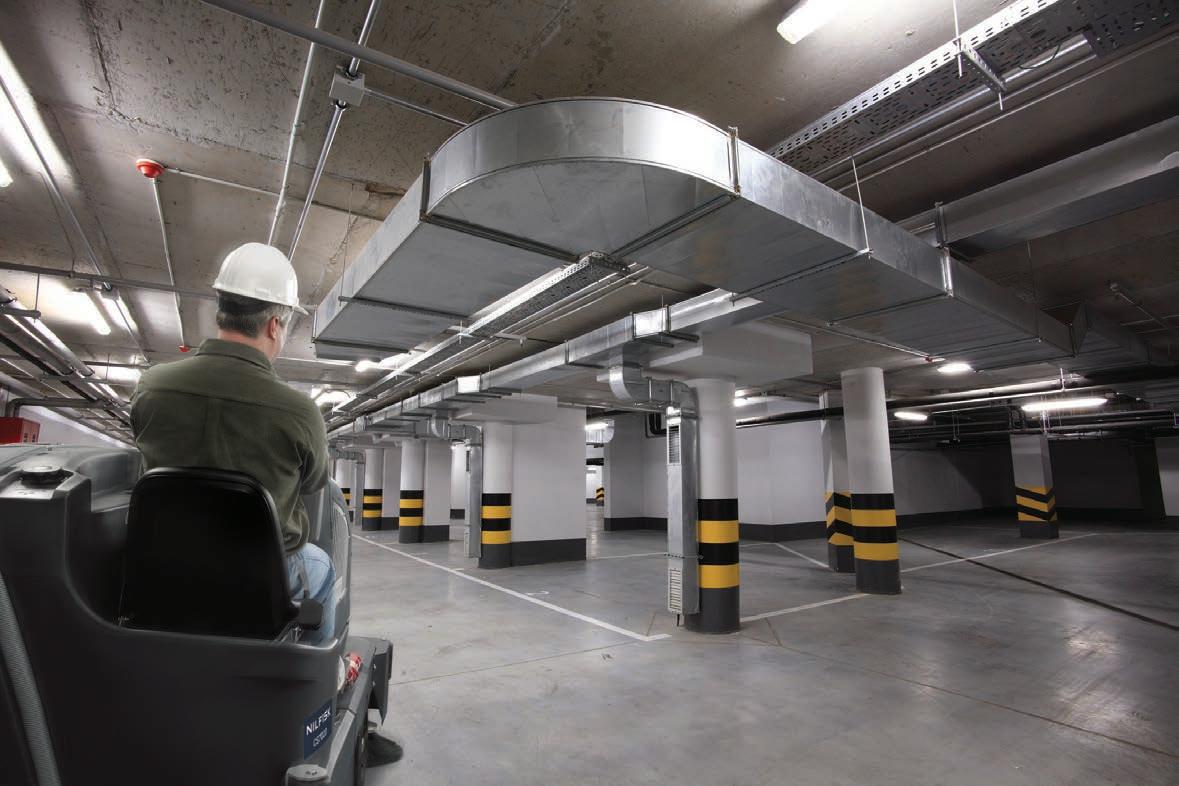
CLEANING WAREHOUSES WITH A COMBO TWIST
MHD interviewed international industrial cleaning company Nilfisk’s Commercial Product Manager-Pacific, John Mahar, discovering everything related to its new lithium-ion combination sweeper/scrubber-dryer.
Nilfisk, global manufacturer of powered cleaning equipment, has launched its new CS7020 lithium-ion combination sweeper/ scrubber-dryer with the solution ready to be purchased or rented.
What distinguishes it is that it’s a combination machine, which has been designed from the ground up. It’s a fully functional sweeper and scrubberdryer in every sense of the word.
The fully functional solution is bolted onto the same chassis with the front half of the machine being the sweeper and the back half being the scrubberdryer.
The sweeper with optional dust-guard
dust control and the rear scrubbingdrying functions are electronically controlled.
CLEANING FACILITIES SUSTAINABLY
This is an ideal solution capable of sweeping up small and larger materials such as bits of wood from broken pallets and plastic packaging materials.
It takes care of all of that, sweeping effectively and keeping dust under control as well. And then of course, there’s the scrubber dryer function.
“Many companies globally are already using this combination sweeper/ scrubber-dryer solution and now it’s
available Lithium-Ion powered,” says John Mahar.
“While it has a lot of smart features built into it, it is so easy to use. A single push of either one of the two main start-stop buttons operates either the scrubber-dryer or the sweeper functions – or both simultaneously. It sweeps and then scrubs-dries in a single pass.”
It’s well-suited to warehouse and logistics sites – especially 3PL facilities where clients are regularly visiting, where they don’t want to see a dirty floor. Warehouse managers can proudly show the customer where their inventory is stored in their DCs and visitors can see the floor has been
56 | MHD MAY 2024 MHD WAREHOUSING
The Lithium-ion batteries come with a five-year warranty. Image: Nilfisk.
swept, scrubbed, and dried all in one cleaning exercise.
As a lithium-ion solution, the CS7020 combination sweeper/scrubber is powered by batteries and emits zero emissions. Due to this electric and eco-friendly technology, it has longer run times and can conveniently be recharged when partially or fully discharged.
The lithium-ion batteries come with a five-year warranty, which means after sales support is provided by Nilfisk and the battery manufacturer.
“It’s very good at getting close to edge cleaning,” explains John.
“It can clean close to the racks and throughout the aisles, and all within a reasonable timeframe so there is little to no downtime at the site. It has an optimal cleaning width for both sweeping and scrubbing. Its scrub path is 1.24 metres wide and the machine itself is an optimal 2.6 metres in length so turning in aisles is a breeze.”
SAVING ON WATER AND CHEMICAL USAGE
Other unique features the CS7020 combination lithium-ion sweeper/ scrubber has are a rear wheel steering function, which means it can turn its own length. For example, if it’s
solution tank holding the clean water.
“The machine will add chemical detergent at a ratio rate that’s determined by the user – and when the user wants – with a simple button push,” notes John. “You can use the 7020 with or without chemical.” This allows the solution to work more efficiently and less of the chemical is used.
Whether the environment is commercial or industrial, there can be a lot of dirt and dust collecting inside a business’s facility. Less water can be used depending on the amount of dirt or dust.
“This all results in saving on chemical and water usage,” adds John. “It also has Nilfisk’s ‘Smart-Flow’ feature, which means when the machine is turning a corner, or it’s doing a U-turn for example, it automatically reduces the water flow as the speed reduces.”
BUYING AND SERVICING
Many warehousing sites may only consider a sweeper initially to clean, but the CS7020 combination lithium-ion sweeper/scrubber can clean polished smooth or rougher surface concrete floors, removing dust, dirt and debris by sweeping, and then scrubbing and drying.
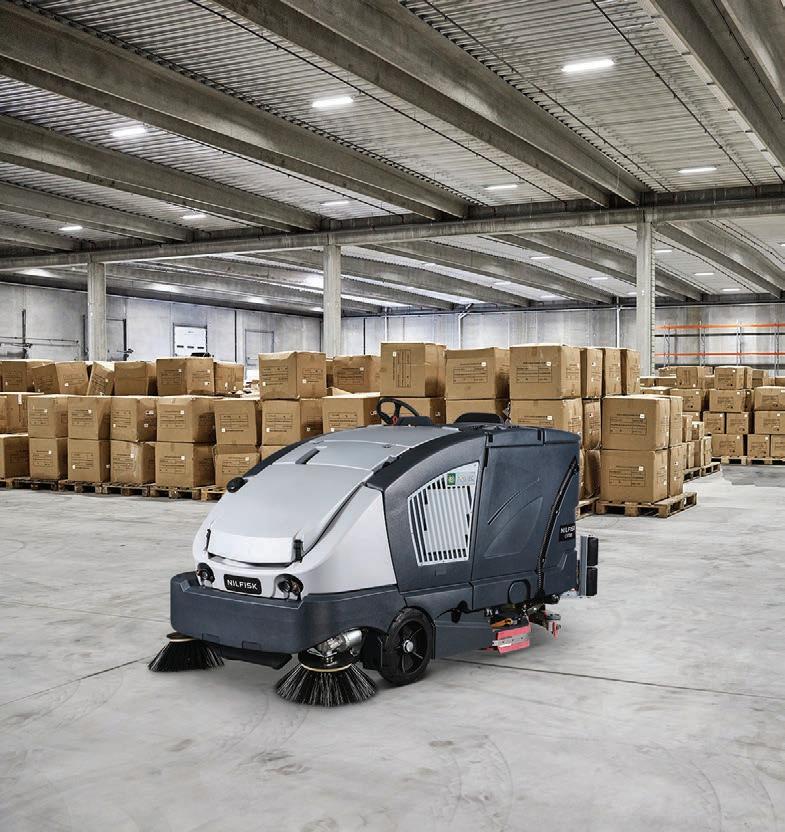
recharge to about 80 per cent of its capacity, or for a full charge back up to 100 per cent – it’s just only around three to three-and-a-half hours,” says John.
“It simply means that if they wanted to clean in the morning and then have a break and then do more cleaning –particularly of a large facility like a 75,000 sqm or bigger site – where they may require daily ongoing cleaning.”
Operators can clean some of the facility in the morning, charge it at lunchtime then use it again in the afternoon.
Nilfisk offers various pathways for customers to acquire the CS7020 combination lithium-ion sweeper/ scrubber. The customer can either buy the solution outright or simply rent it if they don’t want to own it.
“Rental agreements usually run for between three to five years,” adds John. “Renting can be more affordable and attractive for some companies from an investment viewpoint. The rental agreement fees include quarterly servicing by Nilfisk.
“We have nationwide after sales support, which our factory-trained technicians provide. They are located in each state and capital across Australia with servicing dealers providing the same support in some country areas.
“If the customer wants their machine serviced on an agreed periodical date – a service agreement means our technicians visit their site quarterly to ensure the CS7020 machines are optimally performing.
“We offer cost-free presentations and demonstrations of our solutions to new and existing customers and sites. If someone wants to trial one of our machines for a few days on their site, we can normally arrange that. We also provide ongoing machine user training to our customers and their cleaning team – not just after sales support.
“There are sometimes two or three staff members at a DC or logistics site that would clean from time to time. We have various assets available to support them, including face-to-face hands-on training, as well as online and print materials to ensure the operator uses the cleaning equipment to its full potential. With the CS7020 – one operator on one machine and in a single pass achieves the best efficient and productive cleaning results possible.”
■ MHD MAY 2024 | 57 MHD WAREHOUSING
The CS7020 Lithium-ion combination sweeper/ scrubber-dryer. Image: Nilfisk.
Healthcare products, including temperature sensitive products, demand highly specialised climate and temperature control. Image: Sigma Healthcare Logistics.
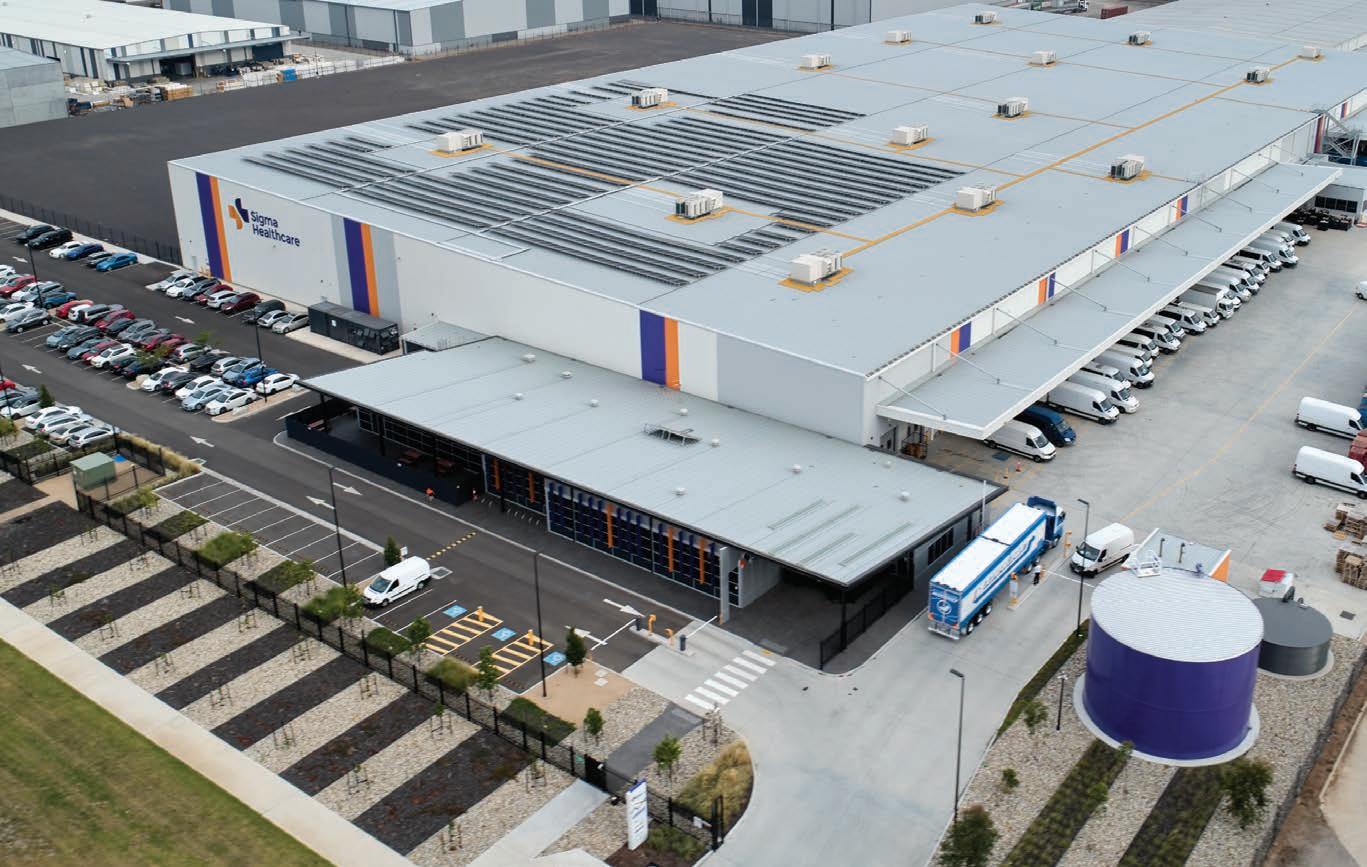
SOLUTIONS FOR PHARMA NEEDS
Nick Rimac from Sigma Healthcare Logistics spoke to MHD about the company’s history, its role in the pharmaceutical space, its state-of-the-art DCs, and bespoke solutions.
The landscape of healthcare logistics is evolving rapidly, driven by the imperative to enhance patient outcomes and access while also ensuring sustainability and resilience.
Traditionally, healthcare logistics focused primarily on delivering products efficiently. However, there’s a significant shift towards a patientcentric model with supply chains being designed and optimised to ensure timely access to the right products and services improving patients’ overall experience and outcomes.
Environmental focus is increasingly becoming a priority across industries, including healthcare. Organisations are under pressure to minimise their carbon footprint and adopt eco-friendly practices including reducing waste, using renewable energy sources, and
implementing efficient transportation and logistics strategies to lower emissions.
Sigma’s Contract Logistics (3PL & 4PL) division has been operating for over 10 years and is part of the Sigma Healthcare group. Sigma Healthcare provides cost-effective 3PL/4PL logistics solutions, allowing partners and clients to focus on their core business activities.
Healthcare products, including temperature-sensitive products, demand highly specialised climate and temperature control, sophisticated monitoring and experienced operations through the entire supply chain.
OFFERING 3PL AND 4PL SERVICES
Sigma’s approach offers a flexible and practical solution to unlock operational
and commercial benefits under a fitfor-purpose model, employing proven transition and operational know-how. Importantly, the approach leverages the knowledge Sigma has gained across its experience in healthcare.
When combined with a strong culture of continuous improvement, this integrated management approach can contribute to cost and service benefits across all warehousing functions.
Sigma Healthcare Logistics utilises its network of national state-of-the-art facilities. It is ISO 9001 and ISO 13485 Medical Devices accredited and is now working towards GMP accreditation.
Sigma Healthcare Logistics’ value proposition in many ways supports supplier market requirements through high levels of service, acting as a differentiator in a highly competitive marketplace, where the smallest
58 | MHD MAY 2024 MHD SUPPLY CHAIN

advantage can set you apart from your competitors.
Key competencies and capabilities include:
• National footprint of temperaturecontrolled healthcare facilities
• Quality Management Systems –ISO 9001:2015 & ISO 13485 Medical Devices
• Schedule 8 storage capability –controlled drugs (GHIV)
• Temperature-controlled facilities including cold chain
• Visibility and Reporting
• GWP/GDP compliance
• Temperature monitoring capability throughout the supply chain
• WMS / EDI integration
• Order to Cash
ENERGY EFFICIENT INITIATIVES
Sigma places a high priority on ensuring their assets are well managed and are operated in an energy-efficient manner and supports a collaborative, innovative and cost-effective approach towards the management of our most material environmental issues including waste, energy and emissions.
Sigma offers 3PL/4PL solutions at six of their state-of-the-art warehouses which were all built within the last seven years.
As part of Sigma’s commitment to reducing its carbon footprint, the Group has undertaken several initiatives:
• Installation of roof-mounted solar power systems (total capacity of 1,500kW across 5 sites)
• Solar hot water systems
• LED lighting with motion detectors
• Timer switches
• Water Tanks
• Cooling controlled by environmental monitoring system
Bespoke solution to solve clients’ challenges:
“We have the scale and expertise and we’re agile enough to offer bespoke, flexible, fit-for-purpose solutions to each of our clients”, says Nick Rimac, National 3PL/4PL Business Development Manager, Sigma Healthcare Logistics. “This is where Sigma excels.”
Key aspects include:
• Synergies of single approach across all operations within the supply chain
• Delivery of a structured and disciplined performance management framework
• Full Account Management suite of services
• Leveraging Sigma Healthcare’s experience and capabilities
• Offer a flexible commercial model to drive outcomes
• Highly focused on people and safety
• Open and transparent partnership
• WMS / EDI integration
• Cybersecurity Program
Healthcare logistics has become an increasingly challenging environment with evolving regulatory complexity, cost challenges and unexpected disruptions.
Overall, the transformation of healthcare supply chains towards patient-centric, sustainable, and resilient models is essential for addressing the evolving needs and challenges of the healthcare industry while maintaining high standards
of quality, safety, and ethical responsibility.
At Sigma, our approach revolves around close collaboration with our clients, leveraging standardised processes, automation, and digitalisation to provide dependable and uniform solutions.
By working collaboratively with clients, Sigma ensures that services are tailored to meet their specific needs and requirements effectively. Standardised processes streamline operations, enhance efficiency, and maintain consistency ensuring reliable outcomes every time.
Automation and digitalisation further optimise workflows, reduce manual errors, improve accuracy, and accelerate delivery times. Through these concerted efforts, clients are empowered with solutions that they can trust, fostering long-term partnerships built on reliability, innovation, and mutual success. ■
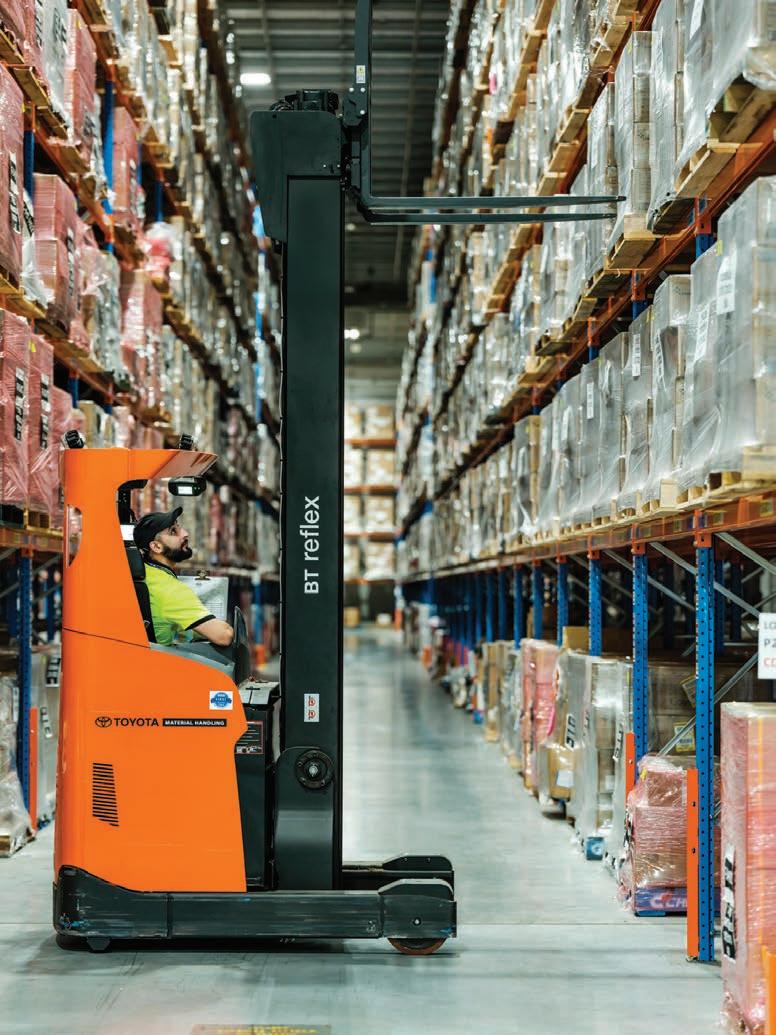
MHD MAY 2024 | 59 MHD SUPPLY CHAIN
Sigma targets big pharma and the wider healthcare industry as a 3PL service provider. Image: Sigma Healthcare Logistics.

NAVIGATING INNOVATION IN LOGISTICS
In the world of freight forwarding, Santova stands out by leveraging its unique blend of technology, personal service, and global network. Arne Walter, Regional Director at Santova Logistics, sheds light on how the company’s strategic adaptations are steering its success in a dynamic logistics industry.
In the rapidly evolving logistics and freight forwarding landscape – characterised by digitalisation and vertical integration – Santova’s approach remains robust and innovative. “Platforms seem to dominate many industries today from food services to freight forwarding,” says Arne Walter, Regional Director at Santova Logistics, highlighting the increasing presence of digital forwarders. However, Arne points out the limitations of these models, especially when disruptions occur: “But who do you actually talk to if something goes wrong? These platforms often lack the human touch
that is so important in our business.”
Santova’s strategy involves a proprietary technological solution known as TradeNav, a testament to their commitment to maintaining a competitive edge. Arne explains: “We have developed our own visibility solution—TradeNav—that is available to all our customers in a desktop or mobile-friendly version.” The recently launched update includes an AI-powered predictive ETA tool, using machine learning to anticipate ETA changes, thereby enhancing shipment visibility and forward planning capabilities.
In times of frequent supply chain
disruptions, Santova’s technology plays a crucial role.
“Reducing lead time variability is a very powerful tool to enhance supply chain management and inventory management in particular,” Arne notes, adding that this visibility allows customers to implement contingency plans effectively. “While our visibility solutions cannot change the fact that vessels might be delayed, having visibility of the fact, days or even weeks in advance gives our customers an opportunity to put contingency plans into action and buffer these lead time variability effects.”
The conversation shifts towards the
60 | MHD MAY 2024 MHD SUPPLY CHAIN
Santova’s TradeNav solution shows its commitment to staying ahead of the technological curve.
Image: Santova.

impact of vertical integration – where large box carriers internalise freight forwarding functions. Arne elucidates their distinctive position: “While large shipping lines have acquired thirdparty logistics assets, focusing on medium-sized customers through our strong international network allows us to provide personalised solutions.” This strategic focus is supplemented by a dedicated team, as Arne highlights: “Each customer has an account manager who looks after all operational aspects of the relationship, gaining intricate knowledge of our customers’ business over time.”
Discussing the relevance of human elements in the digital age, he notes that the human factor remains indispensable: “The investment in our people is aimed at fostering expertise and adaptability. It’s our people who drive innovation, solve complex challenges for our customers, and provide personalised services.”
Santova’s network, including control towers in strategic locations like Hong Kong, Singapore, and Rotterdam, is pivotal in maintaining robust global logistics solutions. “Our network is essential for providing end-toend solutions tailored to the unique needs of each customer,” Arne states, emphasising the importance of these hubs in building relationships and ensuring competitive rates and capacity.

Facing the dual pressures of large carriers’ vertical integration and digital forwarding platforms, Santova leverages its agility and independence. “We believe that independence allows us to offer carrier-agnostic solutions tailored to the unique needs of our clients,” Arne says, while underscoring the company’s approach to embracing digitalisation as an enabler, enhancing operational efficiency and adding value through advanced tools like TradeNav.
Santova also focuses on specific industry needs, such as the pharmaceutical sector. “For our Pharma clients, Santova Australia has recently obtained Good Distribution Practice (GDP) certification for pharmaceutical products,” Arne says, highlighting their commitment to compliance and industry standards.
As the logistics world continues to digitise, Santova remains forwardlooking. Arne predicts the ongoing
“The investment in our people is aimed at fostering expertise and adaptability. It’s our people who drive innovation, solve complex challenges for our customers, and provide personalised services.
”relevance of the traditional freight forwarding model, enhanced by technological advances. “We increasingly see AI being utilised, like for example in our predictive ETA tool,” he mentions, pointing to the integration of AI in improving service delivery and operational efficiency.
Santova’s strategy for staying competitive involves a deep understanding of customer needs and the logistics landscape. “Developing a deep understanding of the customer’s supply chain, then creating the tools that enable them to overcome some of these problems, will enable us to stay relevant,” Arne concludes, reflecting on the necessity of innovation and adaptability in maintaining a competitive edge.
Through a strategic blend of technological innovation, robust network infrastructure, and a focus on human expertise, Santova is poised to navigate the complexities of the modern logistics environment, continually adapting to meet the evolving demands of its clients. ■
MHD MAY 2024 | 61 MHD SUPPLY CHAIN
The recently launched TradeNav update includes an AI-powered predictive ETA tool. Image: Santova.

LIFTING TO NEW HEIGHTS WITH ADAPTALIFT
Adam Duncan from material handling solutions provider, Adaptalift, spoke to MHD about equipping its client, IFC Global Logistics’ Sydney and Melbourne new facilities with its range of Hyster forklifts.
Adaptalift, provider of material handling solutions such as forklifts, elevated work platforms, cleaning equipment, fleet management, and safety systems, is no stranger to offering tailored solutions to its variety of clients. It has been doing so nationally for the past 40 years.International supply chain solutions provider, IFC Global Logistics & Warehousing, has two new facilities in the Melbourne area of Altona and the Sydney suburb of Leppington.Adaptalift’s fleet of reach trucks, low level order pickers, and counterbalance forklifts have all been deployed at IFC’s Victorian and New South Wales-based warehouses.
INSTALLING SMART AND SAFE SOLUTIONS
IFC was moving to new premises when it consulted the Melbourne-founded material handling company for the relevant solutions for its operations.“It was great to be able to help IFC with
this transformational project,” says Adam Duncan, General Manager of Sales, Adaptalift. “Adaptalift like IFC is an Australian privately-owned company offering innovative customer solutions.”IFC needed new equipment for its purpose-built facilities given the age of its previous fleet and the fact IFC were maximising the available building cube of its new premises. As a 3PL provider, IFC required larger and higher facilities to accommodate more inventory for its valued clients.“Our investment in new facilities in Melbourne and Sydney has allowed IFC to increase its storage capacity, operate more efficiently, and ultimately better serve our customers,” explains Ian Taner – General Manager IFC Warehousing and Distribution Pty Ltd.“Our new MHE fleet provided by Adaptalift has proven to be reliable and the ForkTrack fleet management system provides key operational data to help us drive continuous improvement and decision making.”
Additionally, Adaptalift installed specific safety measures into IFC’s new fleet. One of these is its front and rear facing impact cameras, which provides IFC with high-definition real time playback of any impacts detected via the onboard fleet management system. Management can assess any impact footage to ascertain why the machines had an impact and determine what led to this occurrence. In high impact events the equipment can even be temporarily disabled until an investigation has occurred.
Additional benefits of the fleet management system include access control whereby operators can only operate equipment if they are licenced and recorded correctly in the system, It also captured fleet operational activity allowing clients to better understand and measure equipment utilisation.
Pre-start and post start safety checklists are also completed via the fleet management software and
62 | MHD MAY 2024 MHD MATERIAL HANDLING
IFC Global Logistics new Altona facility was recently established to service its valued customers. Image: Adaptalift.

digitally stored on a web-based portal removing the need for paper records. Additionally, a range of system generated reports are available such as equipment hour metre readings and upcoming operator license expiries.
TRANSFORMING OPERATIONS WITH HYSTER-YALE GROUP
Hyster-Yale Group is a US-headquartered company with global manufacturing capability. It installs its market leading range of products all over the world. Its reach trucks, lowlevel order pickers and counterbalance units for the IFC project were all manufactured in Europe.
“We sourced the right product for the customer application,” says Adam. “The reach trucks have a lift height of 11.4 metres and have been fitted with cameras that assist drivers at height ensuring safer operations for IFC”.
“The low-level order pickers are used for case picking and order fulfilment. They’re capable of carrying two pallets simultaneously to increase picking efficiency. The operator platform also raises allowing case picking to occur from the second racking level. The counterbalance forklifts are used to load and unload inbound and outbound vehicles at the facilities as well as containers”.
The fleet is electric powered and relies entirely on batteries. These solutions are sustainable and environmentally friendly as they don’t produce any emissions. They’re also fit-for-purpose products specifically designed for demanding warehouse applications.
IFC engaged in a competitive bid process when determining which solutions provider it wanted to partner with to fit out its new facilities.
“Our offer was the most comprehensive,” explains Adam. “The key reason IFC chose us is because we have great lead times, competitive pricing, and that we offered our unique integrated impact camera and fleet management telemetry system.
The sites are now fully operational, and they have been for some time. The customer is benefitting greatly from the new fleet with additional units on order to further allow IFC to
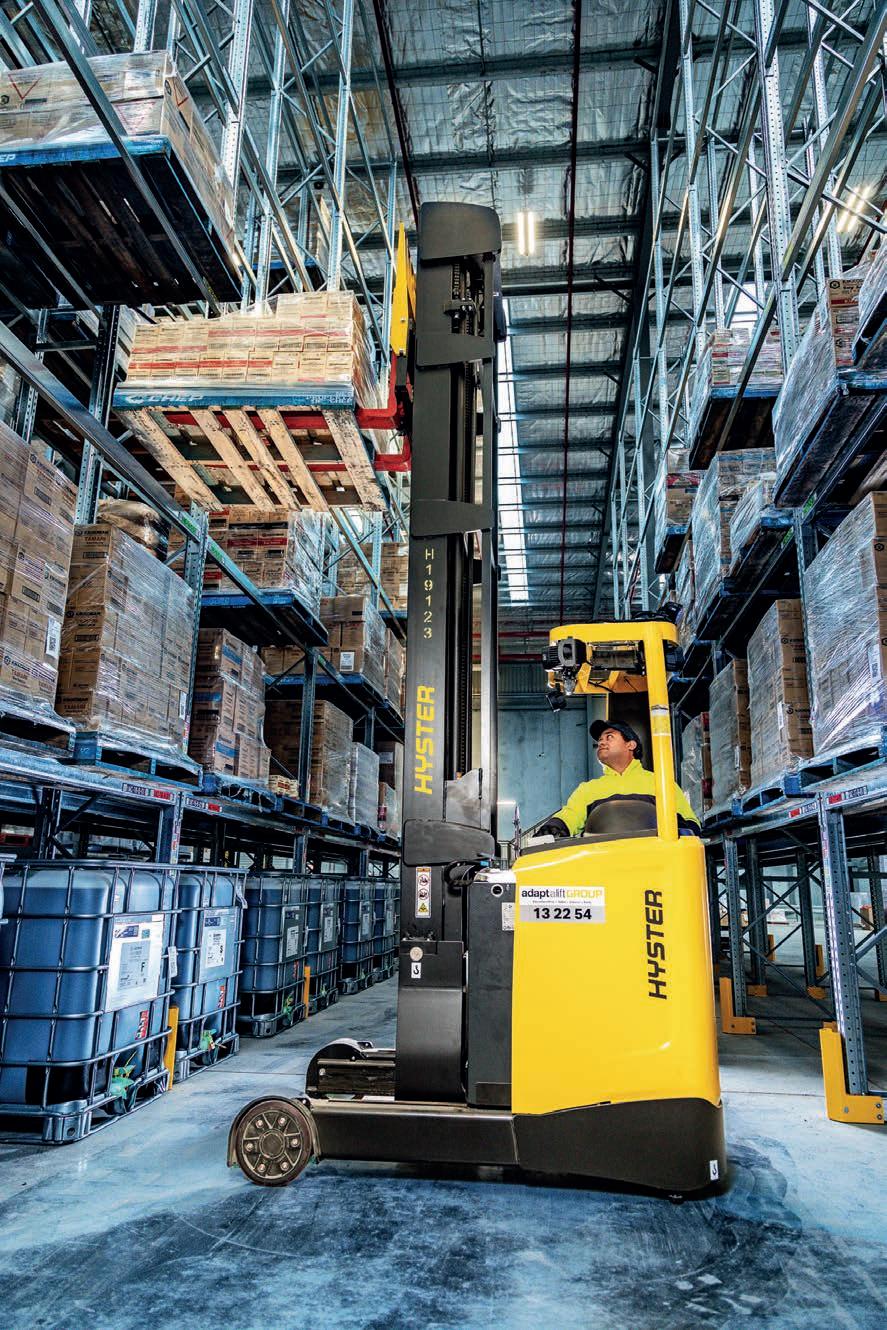
IFC Global Logistics & Warehousing is using Adaptalift’s Hyster forklift range at its new Melbourne and Sydney facilities. Image: Adaptalift.
serve its customers and Adaptalift look forward to working with IFC for many years to come. Feel free to contact our team today to find out more about our range of solutions and to discuss your next project or fleet replacement.”
• Hyster Reach Trucks are offered in 1.4 to 2.5 tonne capacity with outstanding all-round visibility and control to meet the demands of every application. Designed and tested in some of the most challenging warehouse environments they provide longterm reliability and durability.
• Hyster Low Level Order Pickers allow for the handling of single
and double pallets for case picking applications. Advanced control features and adjustable performance settings allow them to be tailored to each customers application. Large battery capacity make it perfect for dual shift operations.
• The Hyster J2.2 to 3.5XN battery electric counterbalance series has been designed to operate in intensive, high productivity applications with long runs and demanding work cycles. The ergonomically designed operator compartment provides a comfortable environment for operators. ■
MHD MAY 2024 | 63 MHD MATERIAL HANDLING

RWTA HOLDING CONFERENCE IN VICTORIA
Marianne Kintzel, Executive Officer of the RWTA, tells MHD about its upcoming conference, which will be held on Victoria’s Mornington Peninsula.
The RWTA Conference 2024, themed On Thin Ice, Navigating Australia’s Cold Chain Viability, aims to navigate through a landscape marked by geopolitical unrest, food insecurity, and pressing environmental challenges.
The conference will highlight the critical need for resilient, effective, and sustainable cold chain operations in Australia; it aims to catalyse meaningful conversations among industry leaders, policymakers, and key stakeholders, sharing insights and exemplary practices.
It’s an invitation to collectively tackle the industry’s significant
challenges through innovative, collaborative approaches, aiming to enhance and safeguard the future of Australia’s cold chain logistics for enduring sustainability.
It will take place at the RACV Cape Schanck Resort, Mornington Peninsula, VIC, featuring networking opportunities, a line-up of speakers, and panel discussions.
The event will include a networking lunch at Montalto Winery, a partner’s program with activities like a cooking class and thermal springs experience, and of course the opportunity for exhibitors to present and in the limelight. ■


MHD MAY 2024 | 65 MHD RWTA
The conference is an invitation to collectively tackle the industry’s significant challenges through innovative and collaborative approaches. Image: Refrigerated Warehousing & Transport Association (RWTA).
The event will include a networking lunch at Montalto Winery class. Image: RWTA.
CALL FOR ASCI SUSTAINABILITY SERIES
The Australasian Supply Chain Institute is calling for abstracts for its upcoming ASCI Supply Chain Sustainability Series 2024, which will be held in Sydney.

The Australasian Supply Chain Institute (ASCI) is thrilled to announce the Call for Abstracts for the upcoming ASCI Supply Chain Sustainability Series 2024, which covers various topics across the supply chain industry. These topics include Supply Chain Management, Logistics, Procurement, Operations Management, and Integrated Product Support.
If you are a seasoned industry expert and would like to contribute to this exciting event, we encourage you to submit your abstract to present at one of the conferences. The next one will be in Sydney on 26 June 2024 with the theme: Supply Chain Management: Supply Chain Sustainability: Why does it matter and why?
We are looking for captivating abstracts that showcase innovative
strategies, best practices, actionable insights, and case studies to enhance the conference experience for all attendees. Your knowledge and expertise can be invaluable to the ASCI community, providing significant career opportunities and ensuring the conference’s success.
Presenting at ASCI conferences offers a unique opportunity to share your supply chain expertise, case studies, and best practices and contribute to the industry. It is also a chance to gain recognition, enhance professional credibility, and shape the industry’s future. Furthermore, you will be able to network with likeminded supply chain professionals, building lasting connections that can prove valuable in the future. If your presentation is selected, you will receive a complimentary registration to ASCI conferences.
To submit your abstract, provide the session title, audience level, learning objectives, primary keywords, and abstract text (fewer than 300 words) in the form. You will also need to provide the presenter(s) details, including a short biography, social media links (optional), any prior speaking experience, and a company logo (optional).
Each presenter is limited to a maximum of two abstract submissions, and each request may have up to two presenters.
The ASCI Committees will carefully review and evaluate each submission, seeking presentations tackling critical issues, innovative methods, and emerging industry trends and providing practical solutions. We are excited to receive your offers and look forward to an enriching conference experience. ■
66 | MHD MAY 2024 MHD AUSTRALASIAN SUPPLY CHAIN INSTITUTE
Presenting at ASCI conferences offers a unique opportunity to share your supply chain expertise. Image: Australasian Supply Chain Institute.
Undertake supply chain evaluation assessment with the Australasian Supply Chain Institute.
The Australasian Supply Chain Institute (ASCI) is thrilled to announce our latest partnership with VCARE Academy - introducing the Supply Chain Knowledge Evaluation Assessment (SCKEA) for professionals.
The SCKEA is a comprehensive evaluation that goes beyond the traditional method by identifying areas for improvement and ensuring that your supply chain teams have the most up-to-date knowledge and skills to manage cost-effective operations and supply chain complexities and overcome disruptions.
The SCKEA is structured into five levels and seven assessment areas,
focusing on end-to-end supply chain operations. For organisations, this provides a clear snapshot of employees’ existing skills, allowing your organisation to develop a capacity roadmap for your team, ensuring they have the skills needed to succeed. Moreover, the Human Resources Department can leverage the tool to evaluate candidates for better skill assessment. Using SCKEA, you can be confident in the skills and abilities of your team, thus taking your supply chain operations to the next level. Individuals can assess their skills, address weaknesses, and improve their skills through professional

and seven assessment areas. Image: The Australasian Supply Chain Institute.
development. Don’t miss out on this incredible opportunity to enhance your supply chain team’s capabilities - contact us today to learn more about SCKEA. ■
ASCI ANNOUNCES VCARE PARTNERSHIP PARTICIPATE IN THE STATE OF SUPPLY CHAIN
The Australasian Supply Chain Institute invites individuals and organisations to participate in a Griffith University-led research project covering the state of supply chain.
The Australasian Supply Chain Institute (ASCI) would like to invite you to participate in a research project that aims to get an up-to-date understanding of the state of supply chains in Australasia. This research is a collaboration between Griffith University (GU) and ASCI.
You have been invited to participate in this research project as you are associated with ASCI and have agreed to receive communications from ASCI. ASCI has kindly agreed to distribute this survey questionnaire on behalf of the research team at Griffith University. As such, the researchers

ASCI
(listed below) will not have access to your name or contact details.
You will be asked to complete an online anonymous survey about your
view on the state of supply chains for your organisation/company. It is estimated this will take up to 30 minutes of your time. You are encouraged to save a copy of your own response so that you can then benchmark your organisation’s performance with the report findings.
As a thank you for participation, you can choose to enter a lucky draw to win one of five conference passes to the ASCI Supply Chain Sustainability Series 2024, valued at over $500 each. The full list of terms and conditions for the prize draw is included in the participant lucky draw information sheet. ■
has kindly agreed to distribute this survey questionnaire on behalf of the research team at Griffith University. Image: The Australasian Supply Chain Institute.
MHD MAY 2024 | 67 MHD AUSTRALASIAN SUPPLY CHAIN INSTITUTE
HUBTEX SECOND GEN FLUX 30
HUBTEX’s FluX Electric Multidirectional Counterbalance Forklift Truck has had some significant and innovative updates. The latest generation has load capacities of up to three tonnes. It has a new central driver’s position, which provides a higher-up all-round visibility compared to its predecessor. Additionally, the patented 360° HX steering has been added to the compact three-wheel running gear for the first time, ensuring smooth changes in direction from longitudinal to transverse travel. It handles both pallet and long-load transport in a single vehicle. This hybrid used as a front and sideloader makes the new 3T FluX 30, suitable for a wide range of sectors, from the timber and metalworking industries, through to the building materials trade.
For more information visit www.hubtex.com.au

AUTOSTORE GRID AND VENDING MACHINE
Global cube storage company AutoStore introduces its latest capability, the Grid and Vending Machine solution, designed to simplify warehousing automation. The ConveyorPort is a workstation in its simplest form, where Bins are dropped on a conveyor and transferred to an opening outside of the Grid. Smart covering and sensors ensure operator safety. The CarouselPort is designed to work with the operator, in harmony with Robots to ensure the next Bin is always ready. The workstation operates with three rotating arms, each holding one Bin tray. The Vending Machine solution includes various Robots and chargers, as well as a dummy display unit, and a grid structure with 60 Bins.
For more information visit www.autostoresystem.com

PROJECT44 OCEAN VISIBILITY
Poor ocean visibility puts a strain on global supply chains, logistics costs, and customer service. At the root of the issue is low-quality data that hinders personnel productivity, streamlined operations, and proactive exception management. Today, more than ever, shippers and 3PLs need global ocean visibility with the data quality, intelligence, ETAs, and proactive exception management that ensures efficient, costeffective, reliable, and sustainable global transportation. Project44’s Ocean Visibility solutions is here to help, with a suite of solutions that uses first-in-class data and analytics to improve personnel productivity, allow for proactive exception management, reduce logistics costs, improve customer service, and empower users for agile transport planning and procurement.
For more information visit www.project44.com

IFM’S TRACK AND TRACE GATE
ifm Track and Trace Gate is the complete solution for your automated and transparent logistics in your incoming and outgoing goods processes. By directly transferring all goods flows to the IT level, you can organise the inter-locking of production, inventory, and suppliers more efficiently than ever before.
For more information visit www.ifm.com/au/en



MHD PRODUCT SHOWCASE
68 | MHD MAY 2024


JOIN
womeninindustry.com.au TICKETS ARE NOW ON SALE
SUPPORTED BY Australia
BY MHD upply
US TO CELEBRATE THE BEST OF THE BEST FROM ACROSS THE AUSTRALIAN INDUSTRIALS SECTOR Celebrate the women who work tirelessly to advance the mining, engineering, road transport, logistics, rail, bulk handling, infrastructure and waste management industries. Thurs 20 June, 2024
PROUDLY
PROUDLY PRESENTED

ON THE MOVE


His extensive experience led him to identify a gap in the market for a new type of warehousing software. Karl’s passion for the intralogistics led him to develop doWarehouse and form the start-up dereOida Pty Ltd. Following the successful sale of the software to several


MHD FEBRUARY 2024 | 70
subsequently in Australia, Arturo honed his project management
A monthly
of the latest appointments in the supply chain, materials handling and logistics industry. Do you have career news to share? Email Edward Cranswick at Edward.Cranswick@primecreative.com.au to be featured. MHD PEOPLE ON THE MOVE 70 | MHD MAY 2024
wrap up
Leading the way. Transforming business.
Argon & Co is a global management consultancy that specialises in operations strategy and transformation. With expertise spanning the supply chain, procurement, finance and shared services, we work together with clients to transform their businesses and generate real change. Our people are engaging to work with and trusted by clients to get the job done.
Start your transformation journey today and download our credentials pack:



argonandco.com
